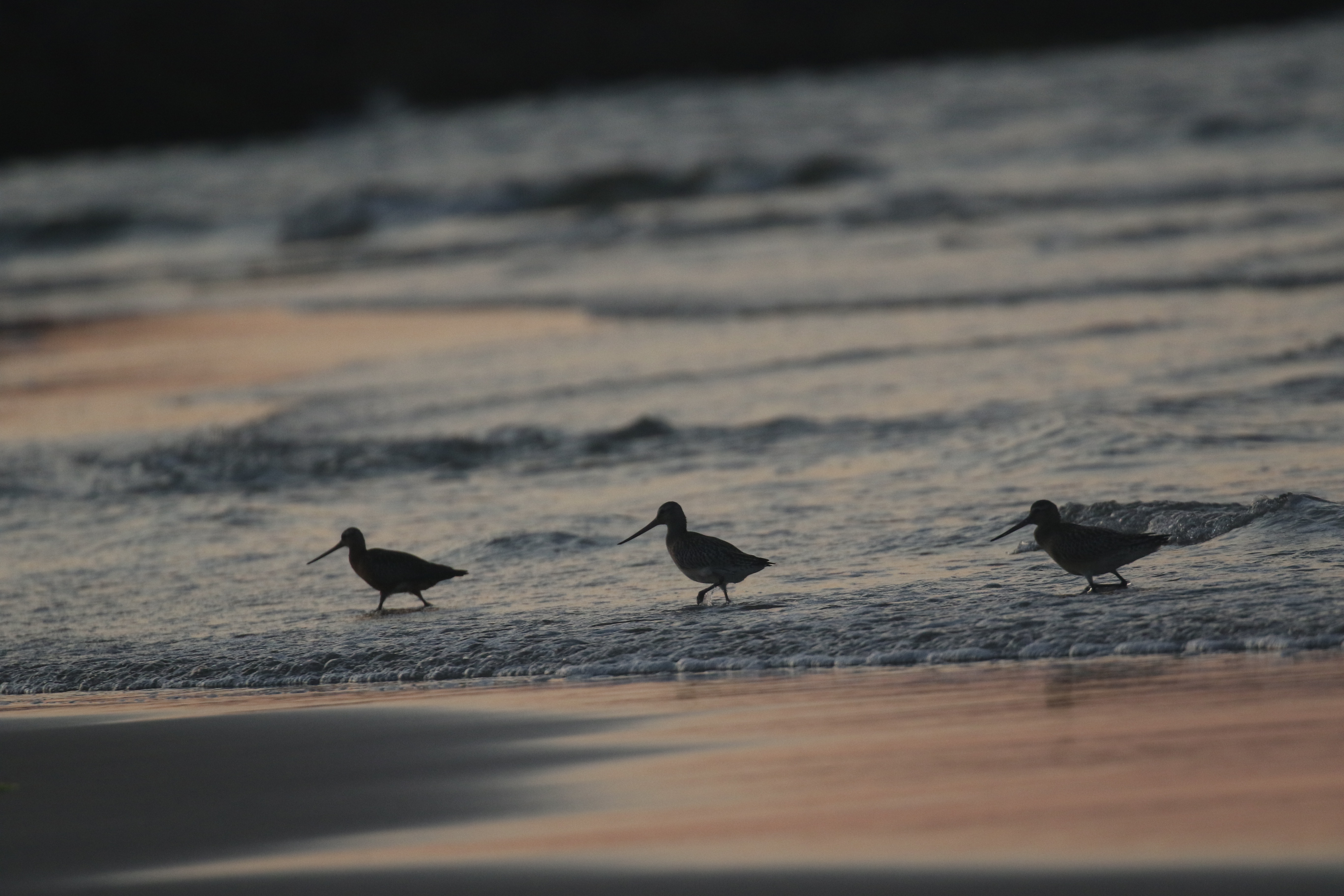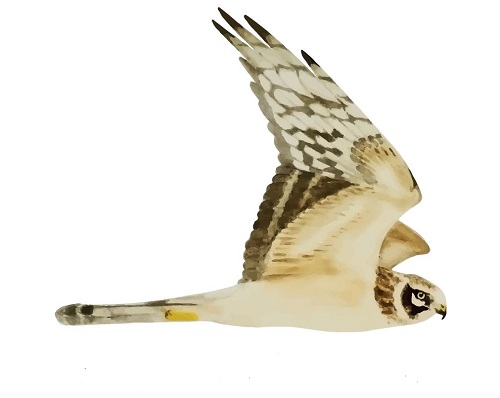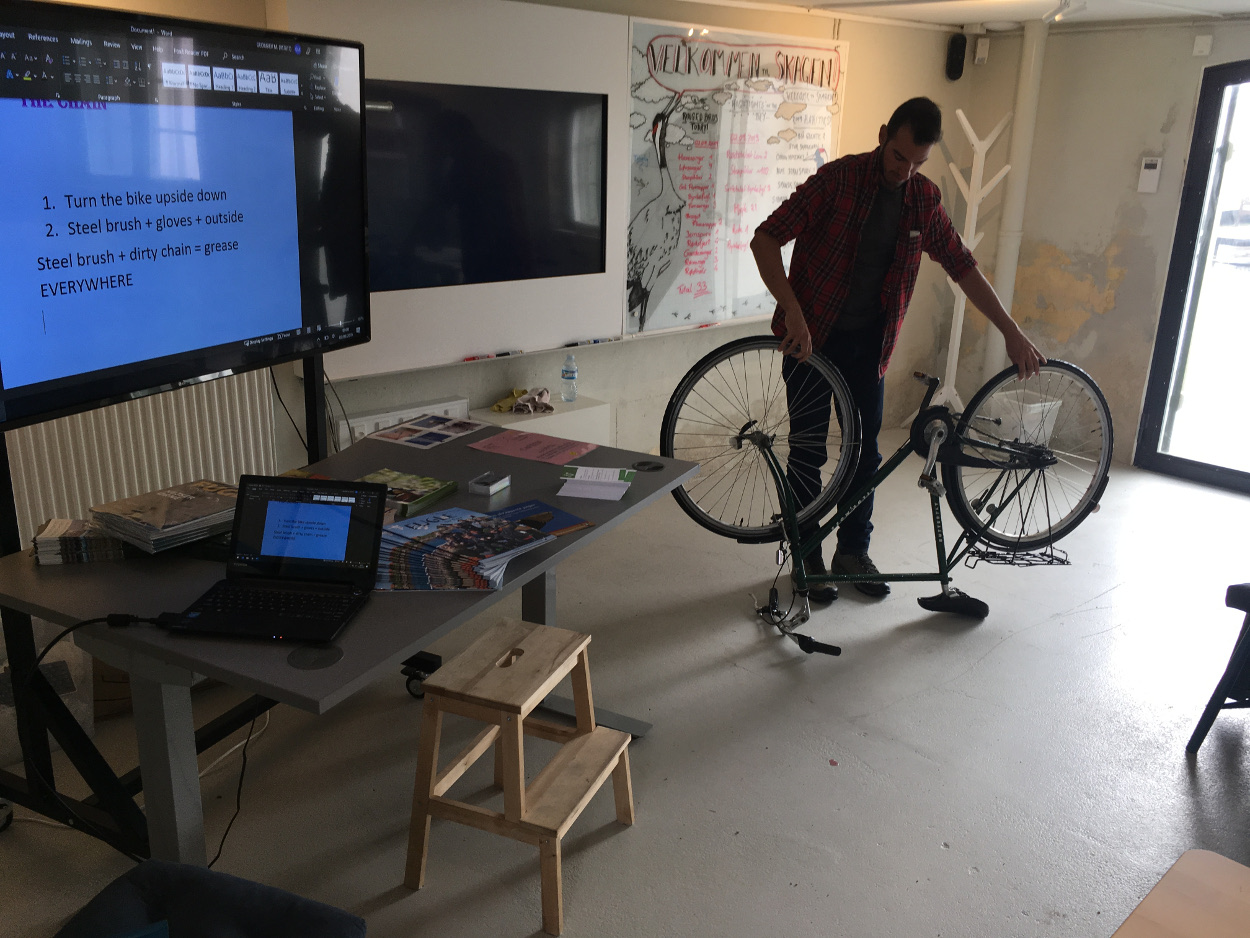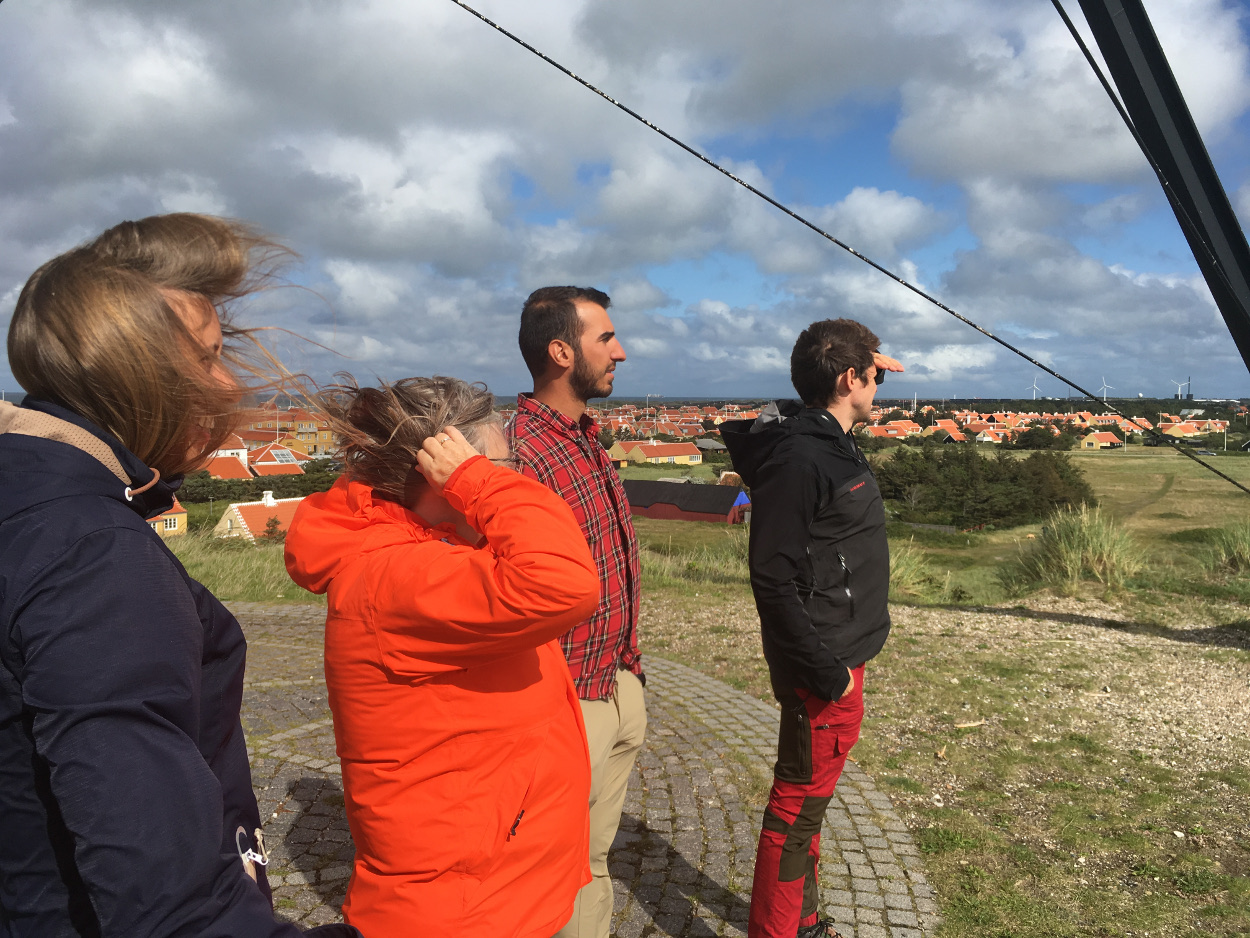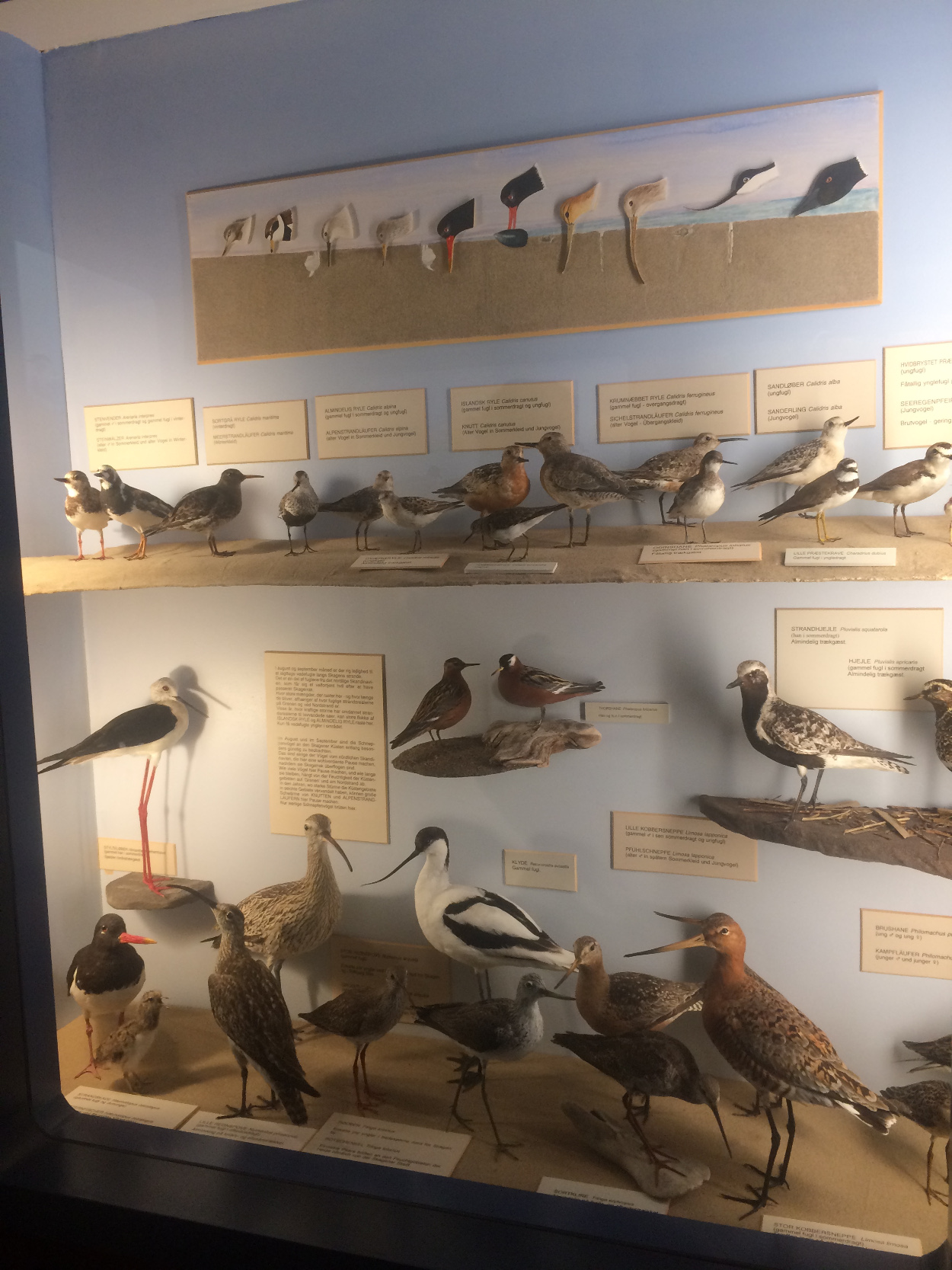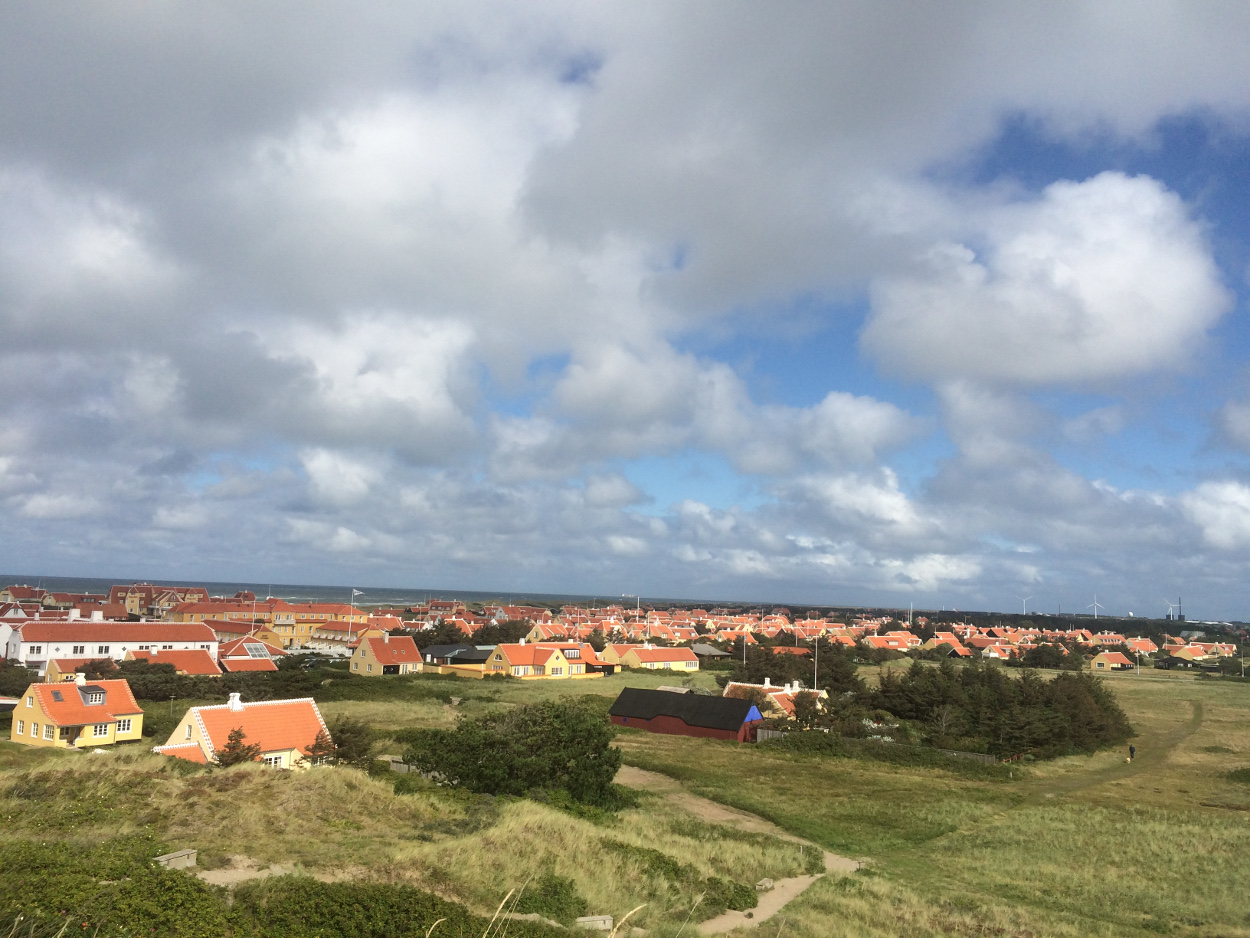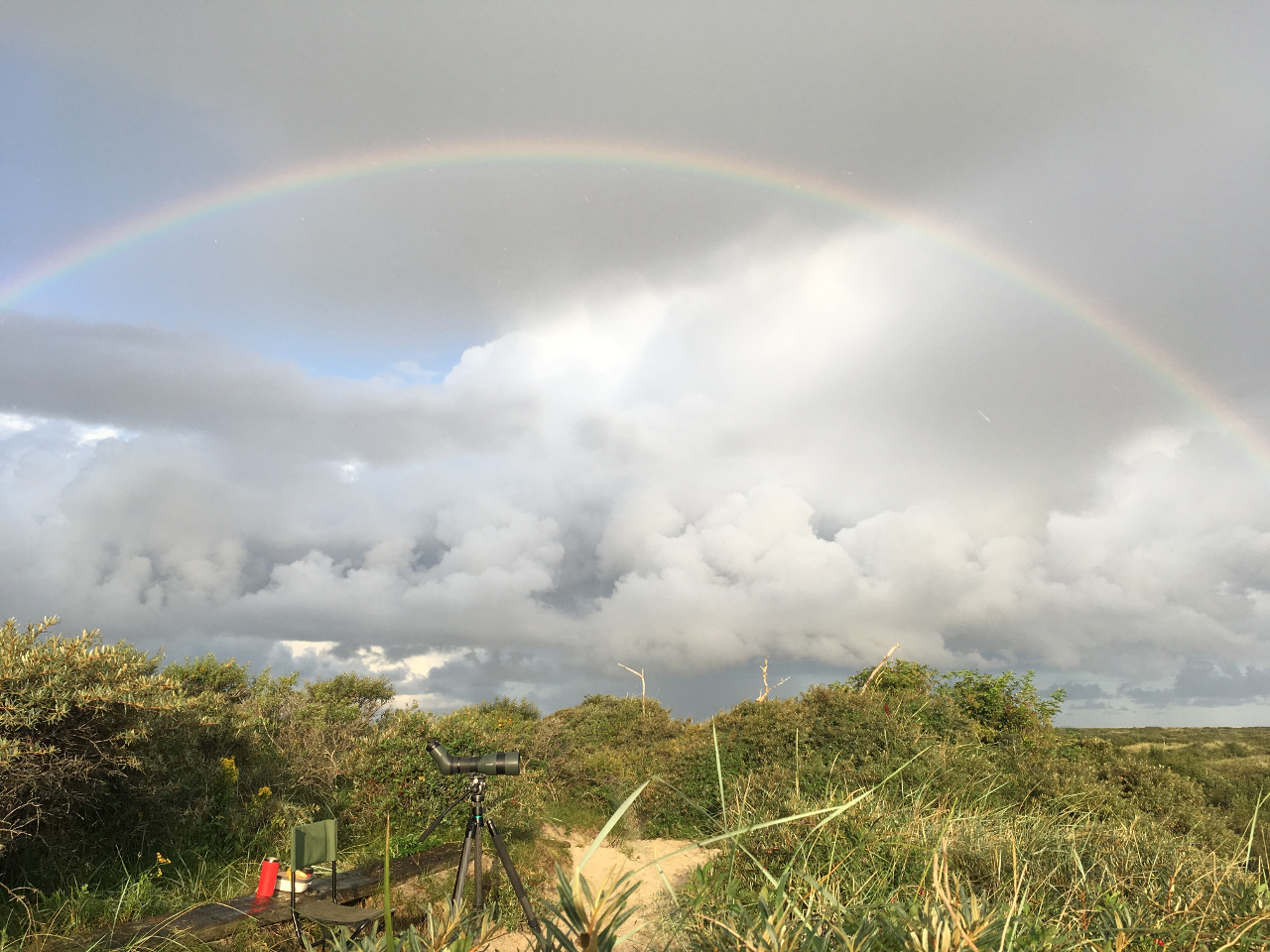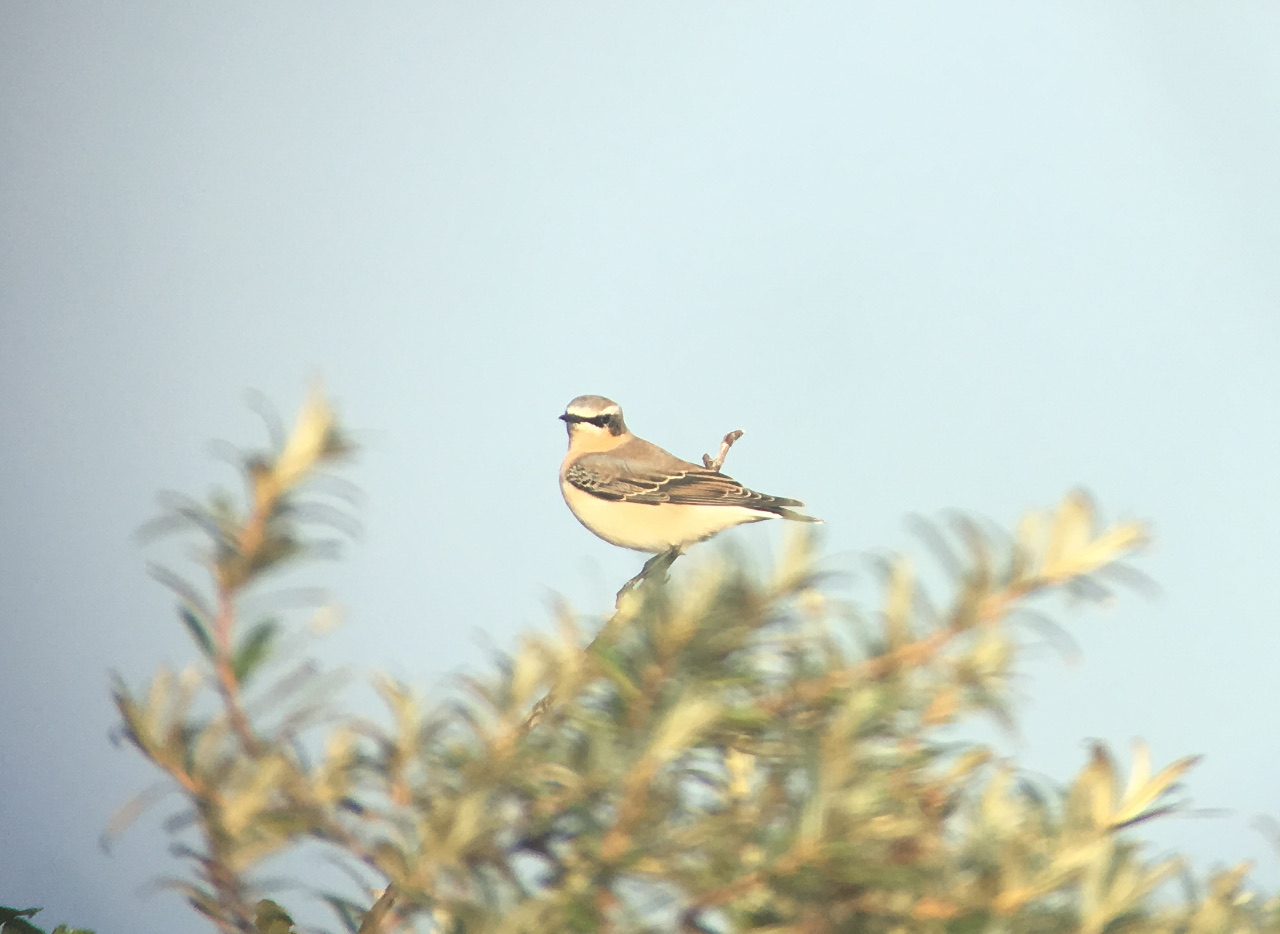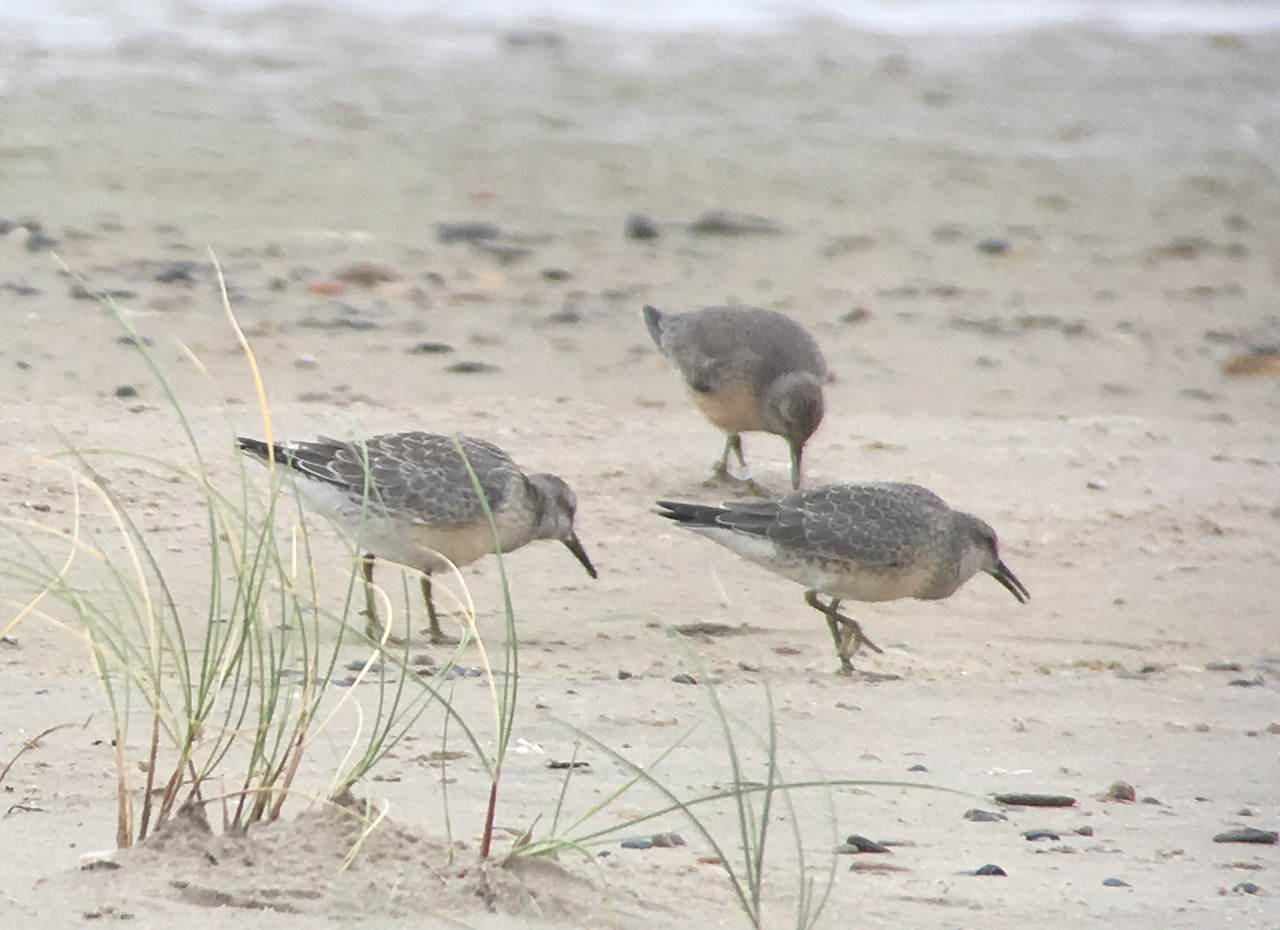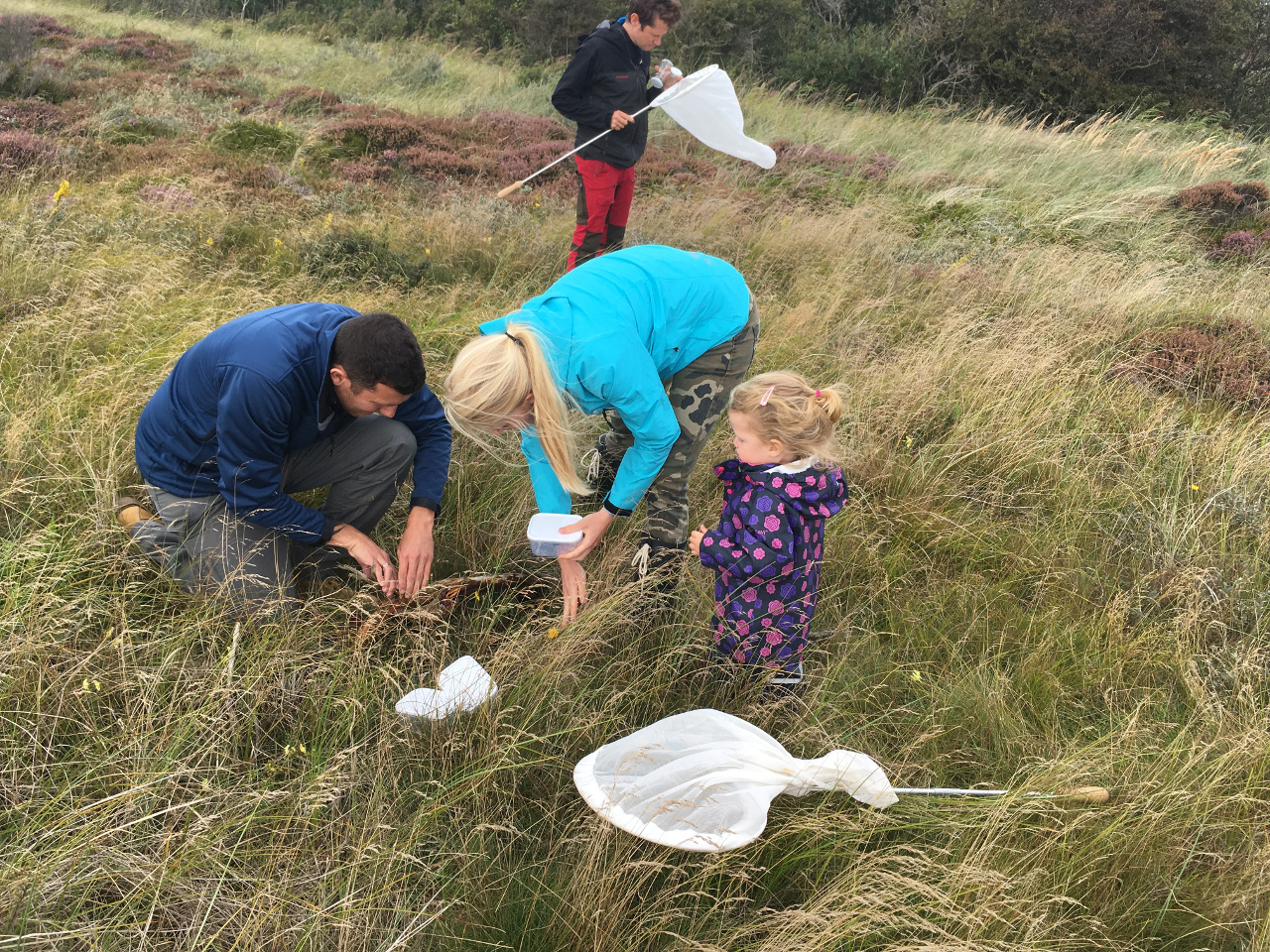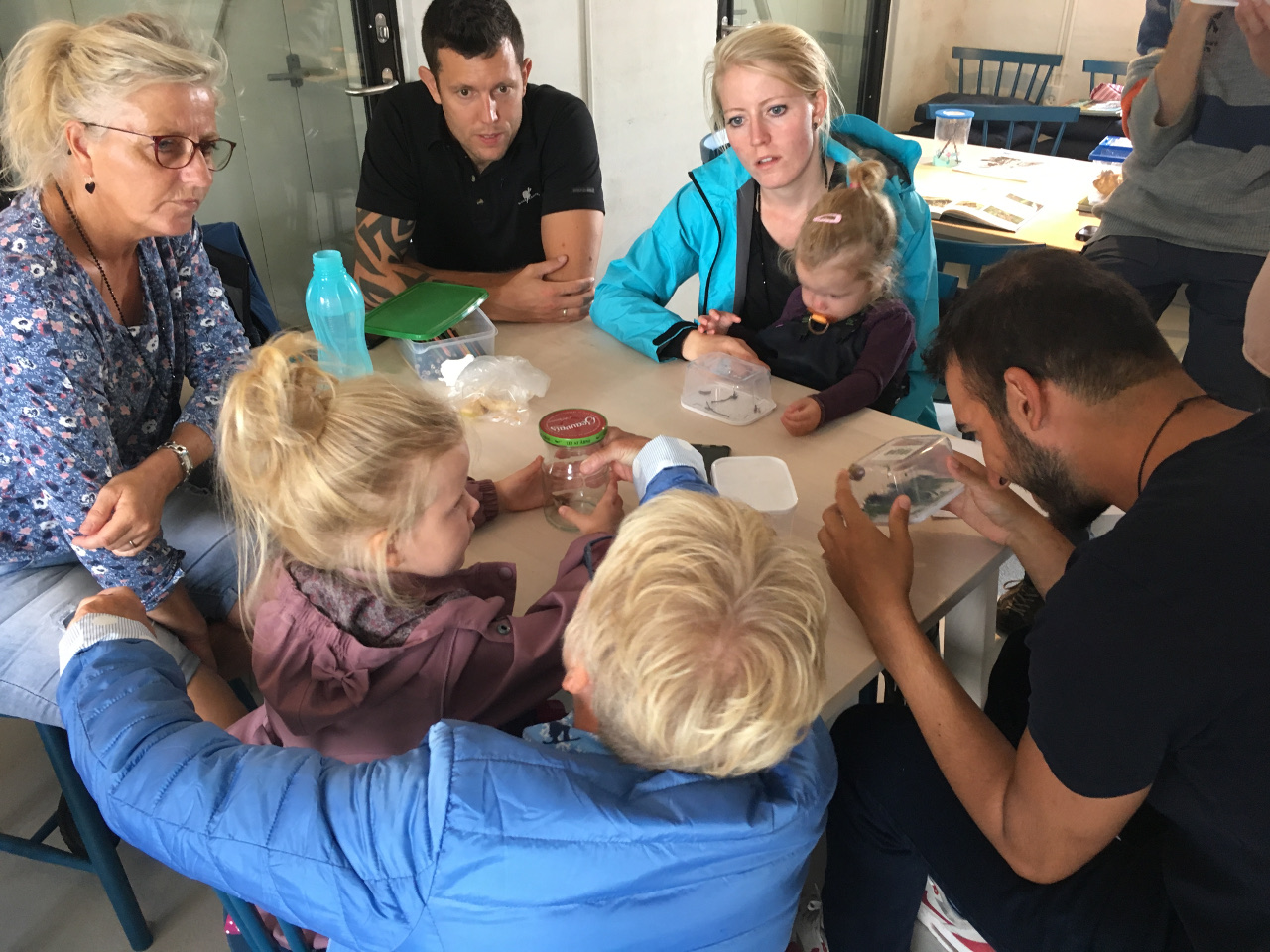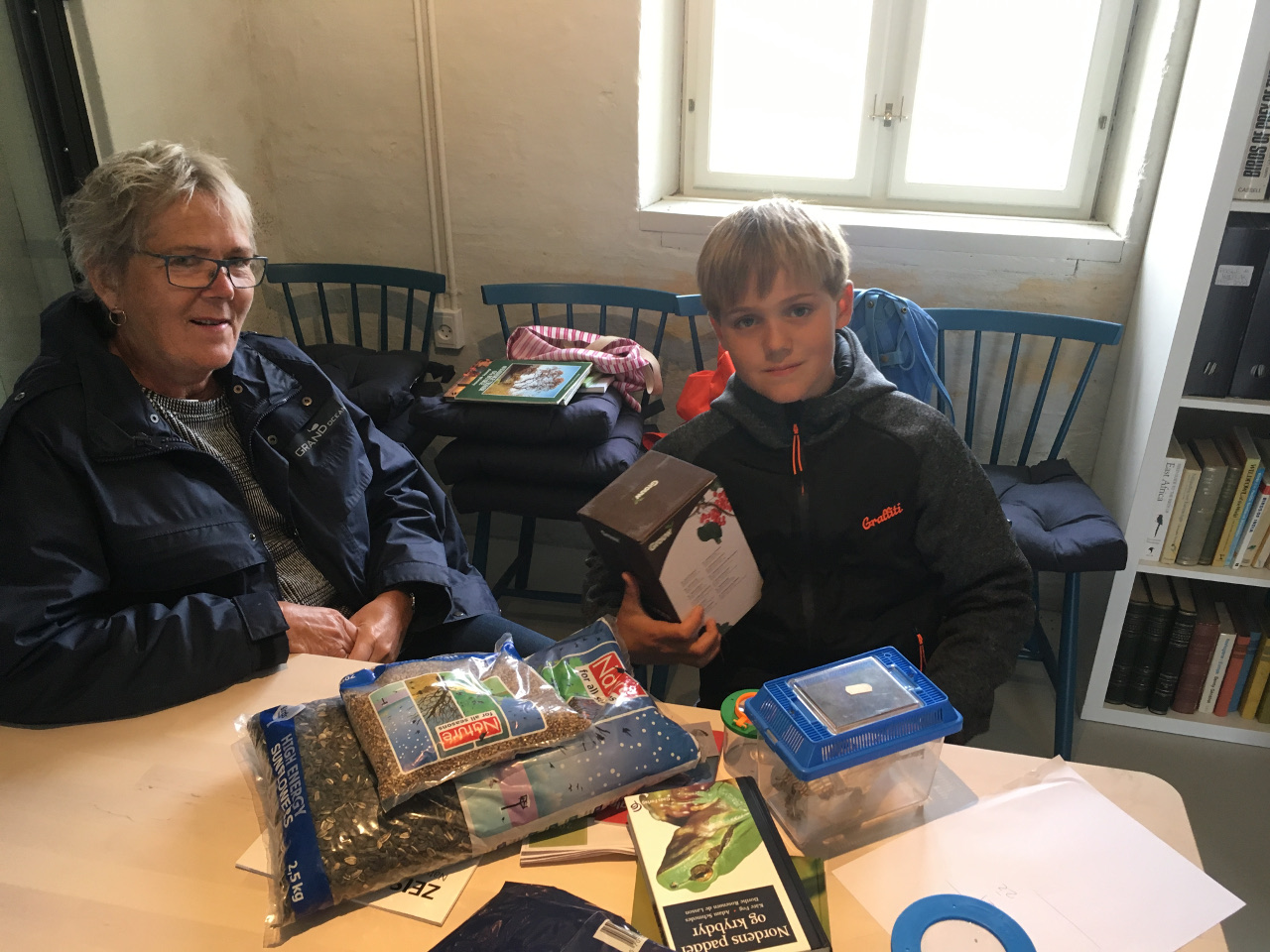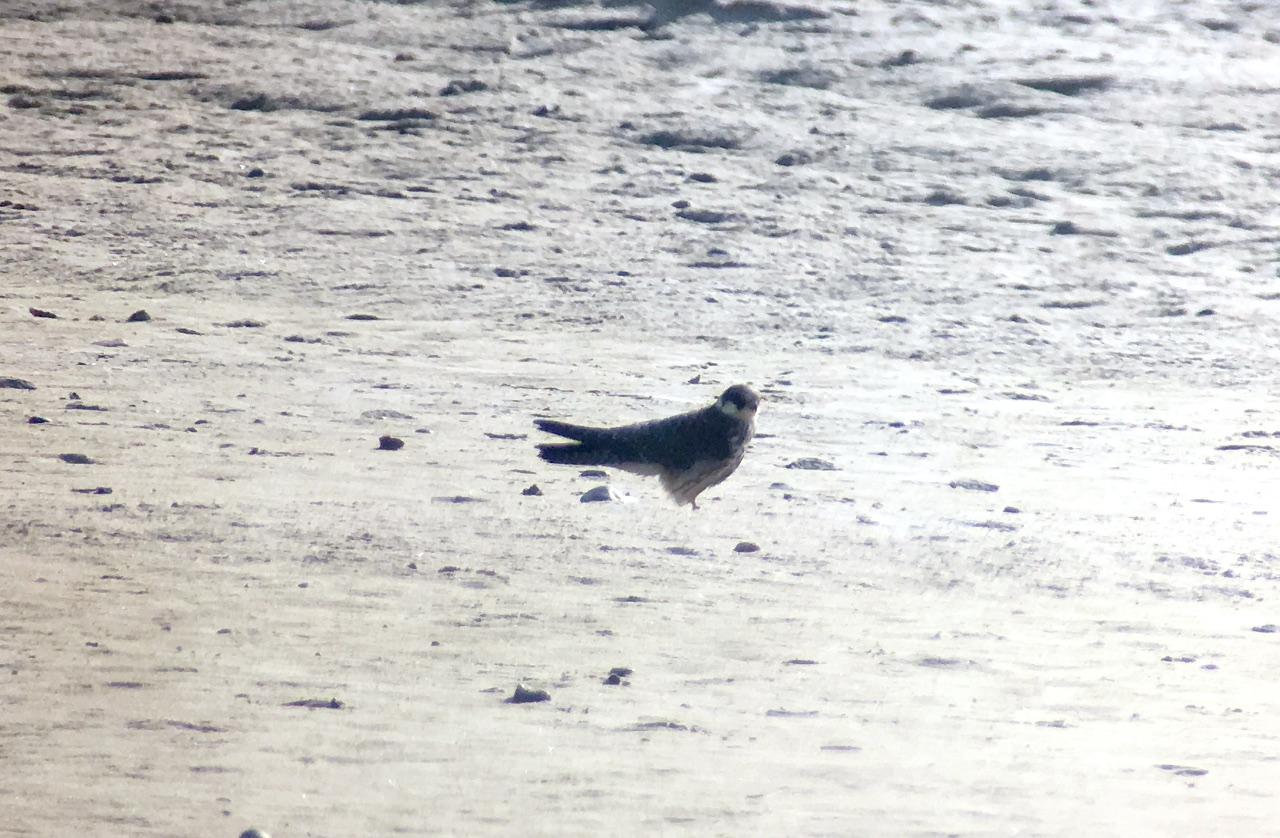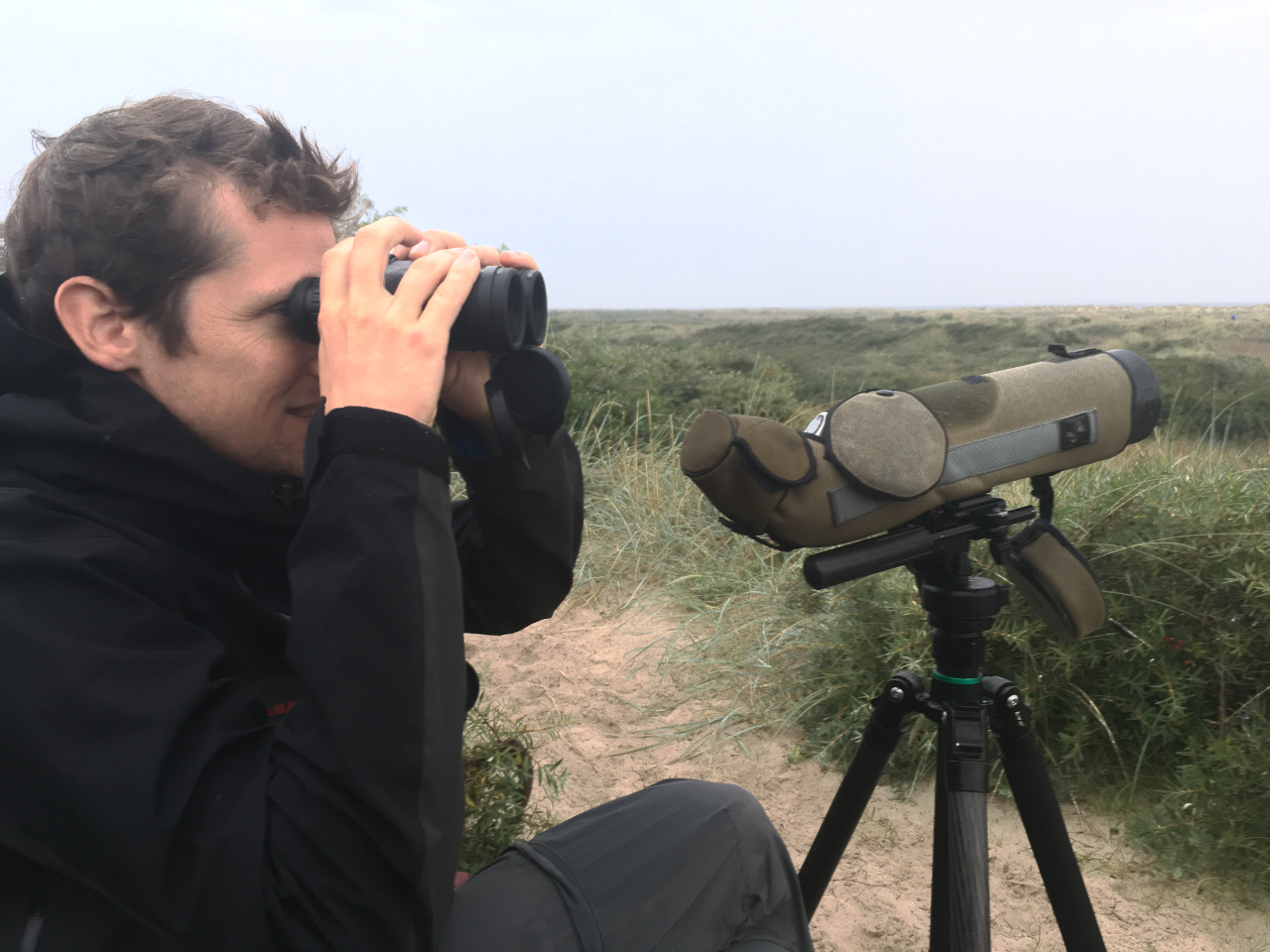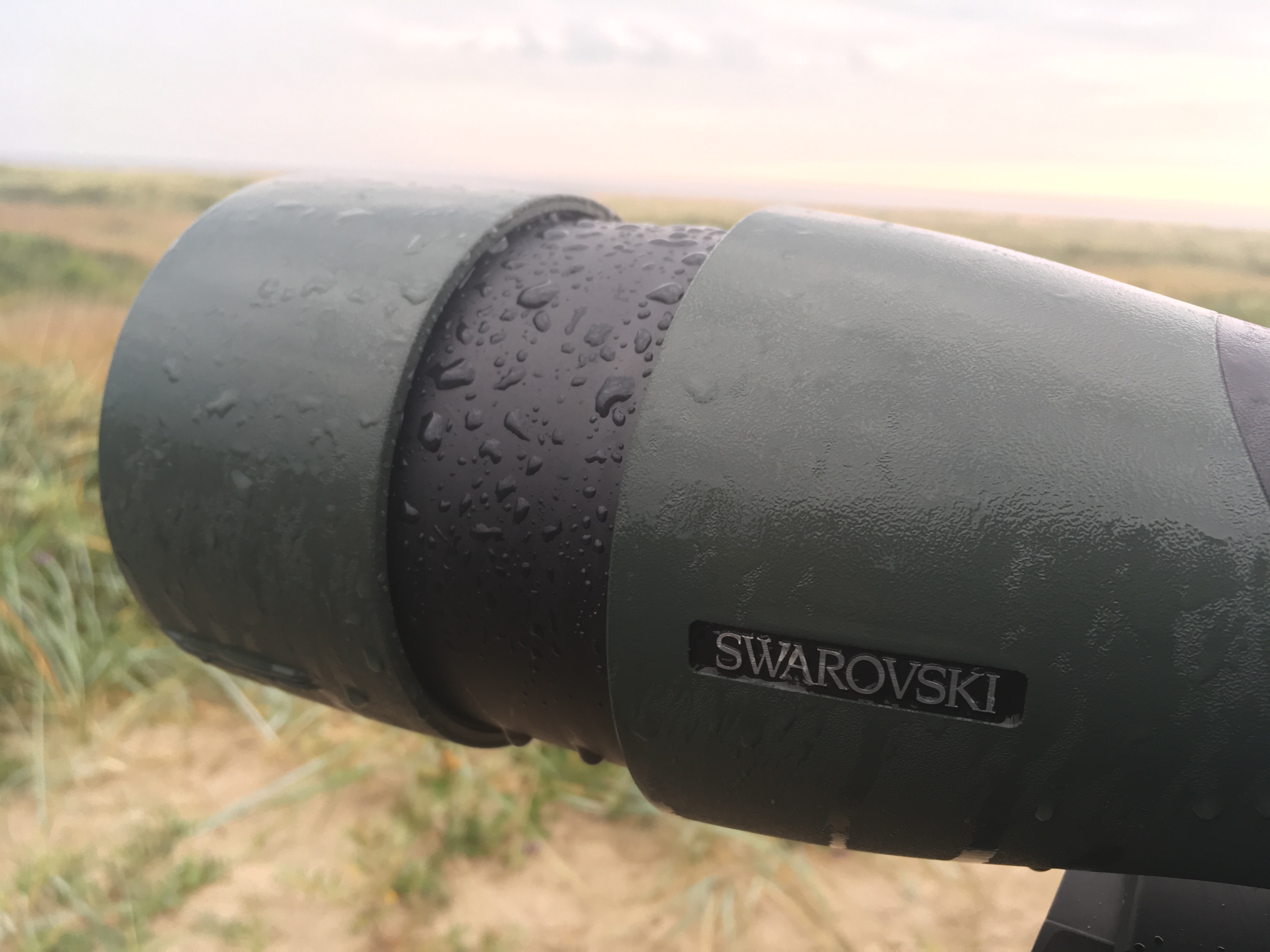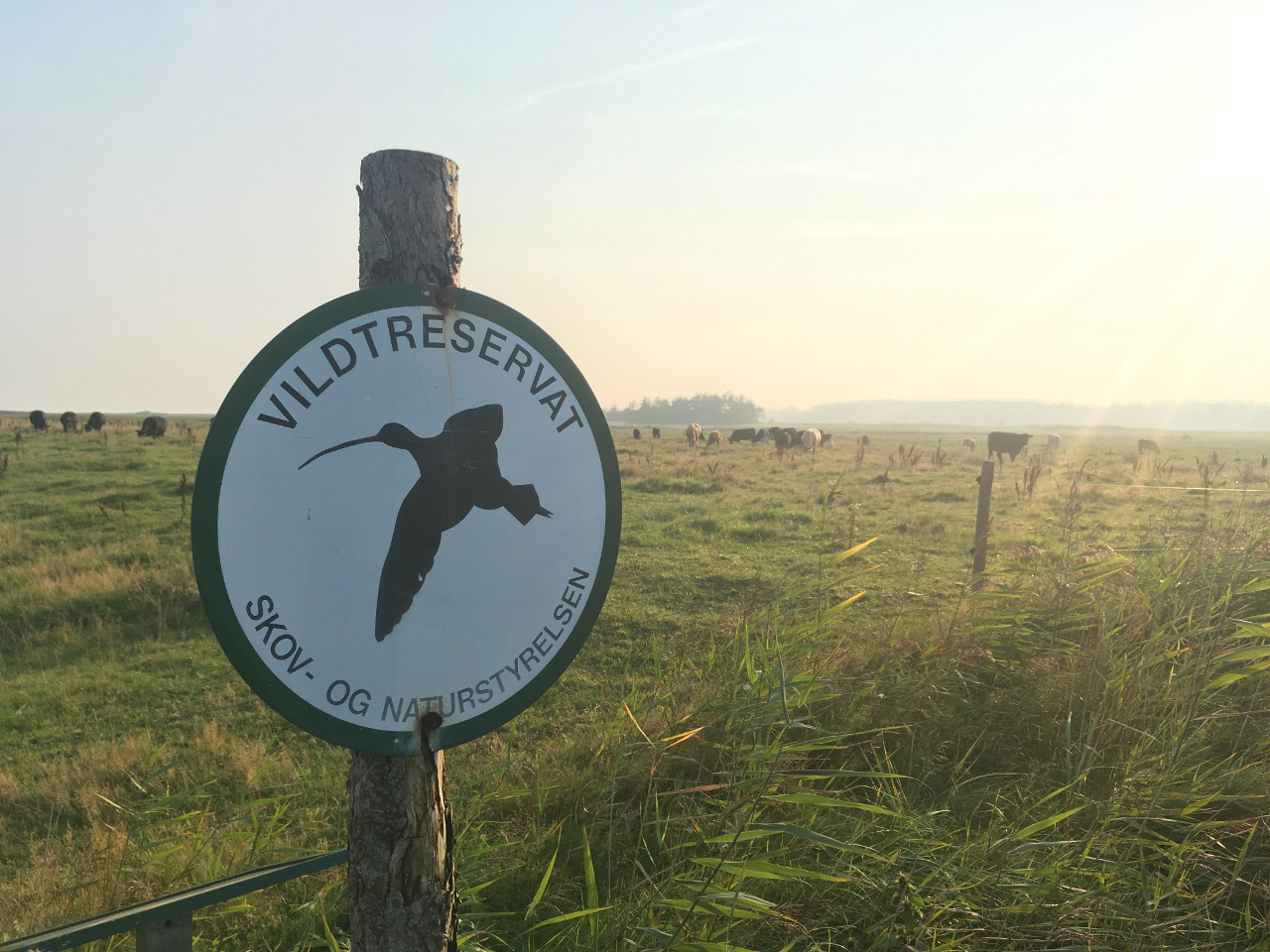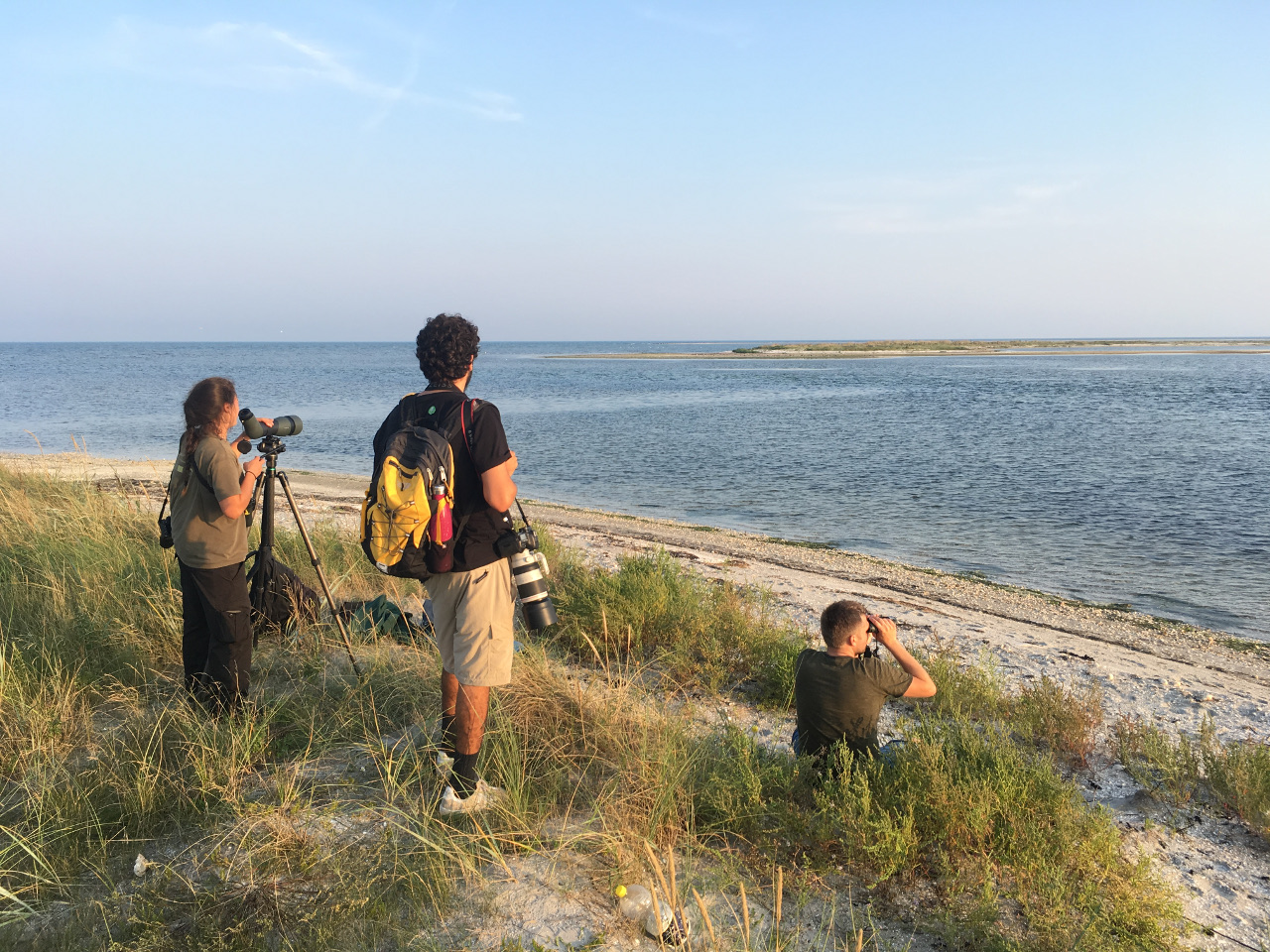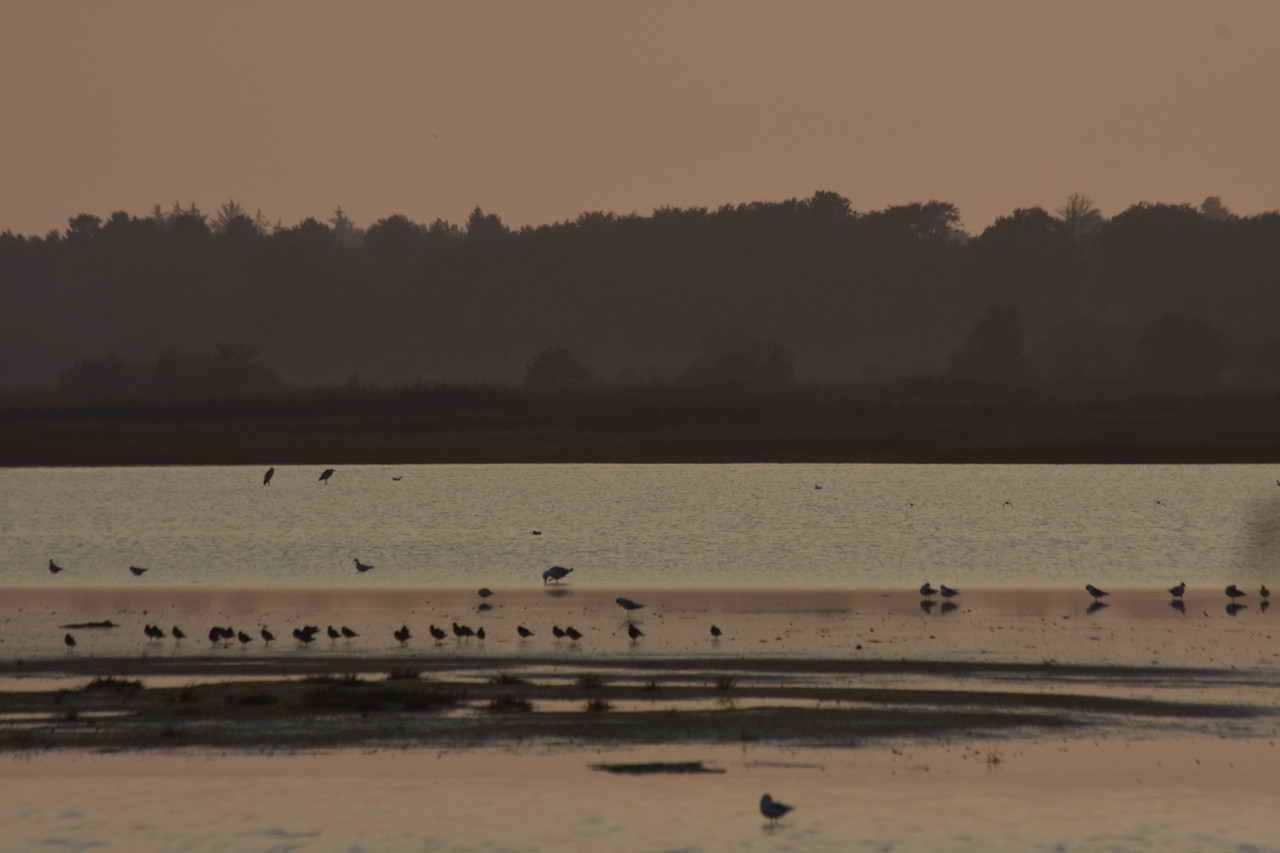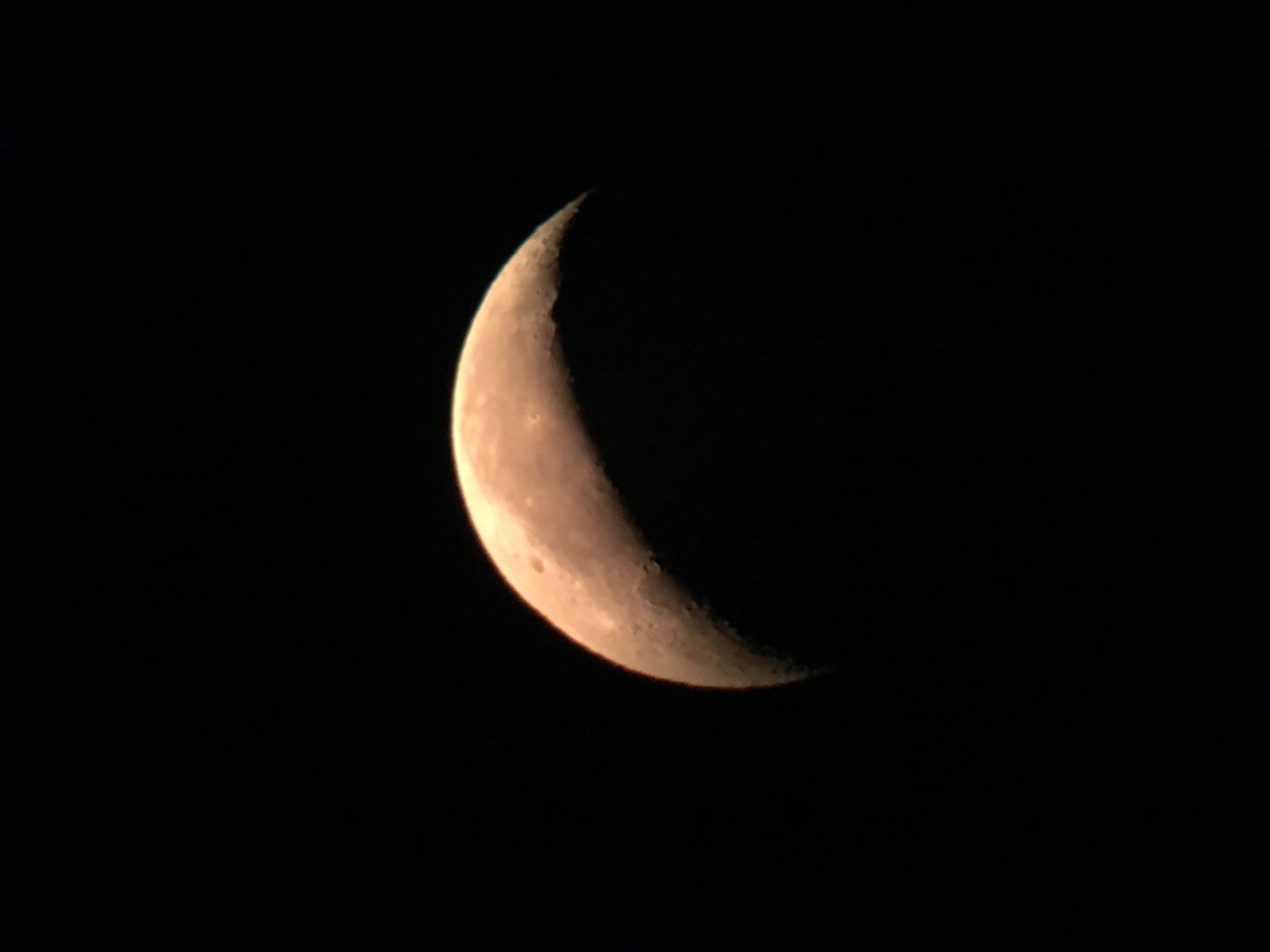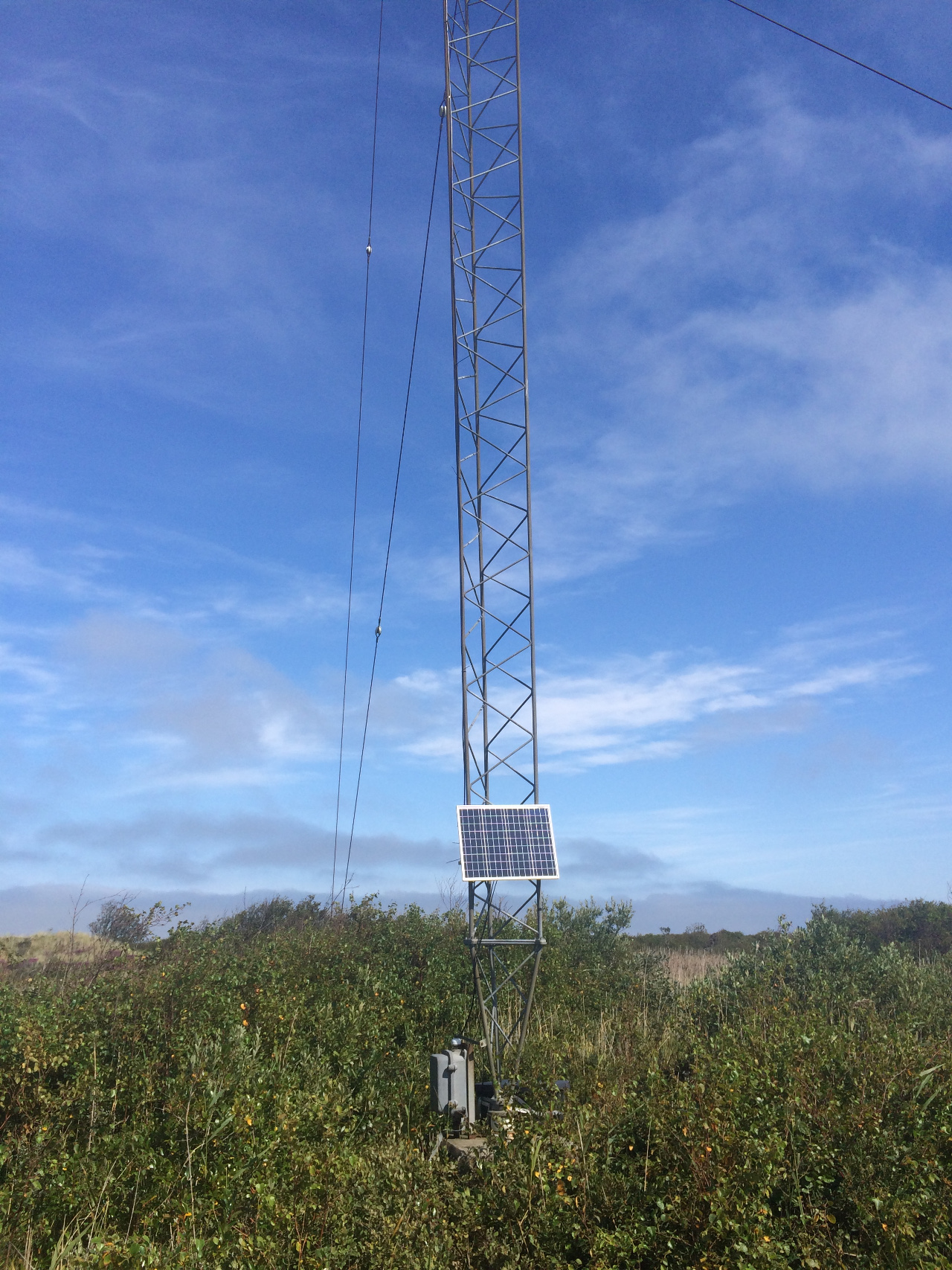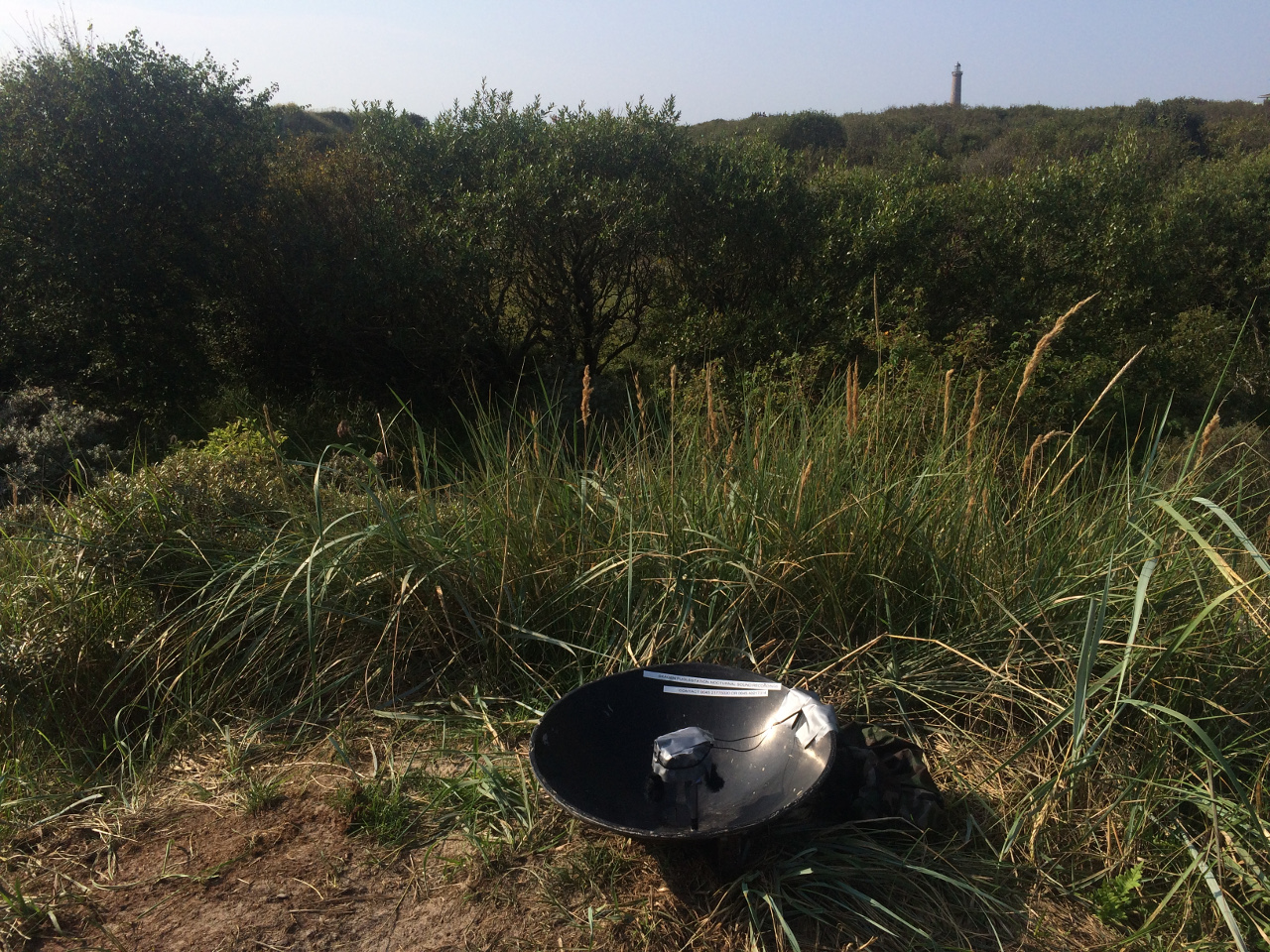Her på Skagen Fuglestations blog bringes korte nyheder i dagbogsformat om hændelser på fuglestationen.
Se indlæg fra måned: jan. (7)feb. (16)mar. (30)apr. (28)maj (30)juni (28)juli (31)aug. (31)sept. (30)okt. (32)nov. (30)dec. (11)
Grand Tour Skagen
The weather didn't allow us to go for ringing or make observations today. A very rainy and windy morning motivated us to clean the lab and bird club. The appartement was cleaned by Rita Pate. The apartment hasn´t been so shiny as before I ve been arrived.
She let even a paper to say ´goodbye´ in 5 different languages, which was a extra surprise for all of us, thank you Rita!
Martin gave us a bicycle workshop, where he explained how to maintain the bicycles, to prevent damage when using the bicycles, because the current weather can also be harmful to bicycles.
From the attic we took the spare bicycles, which Simon brought to the bicycle repair shop, so that we could all cycle. Later, while Simon was preparing the games for tomorrow, Lene picked us up for a Grand Tour in Skagen. We have visited the port, had the opportunity to walk around the Skagens Museum and the Natural History Museum. We had the opportunity to see what the art looks like in Skagen and could see seabirds from close up instead of using a binoculars or telescopes.
She drove us as well form East to West of Skagen, and we had a breathtaking view on Skagen´s yellow architecture.
Thank you Lene for the interesting tour of Skagen!
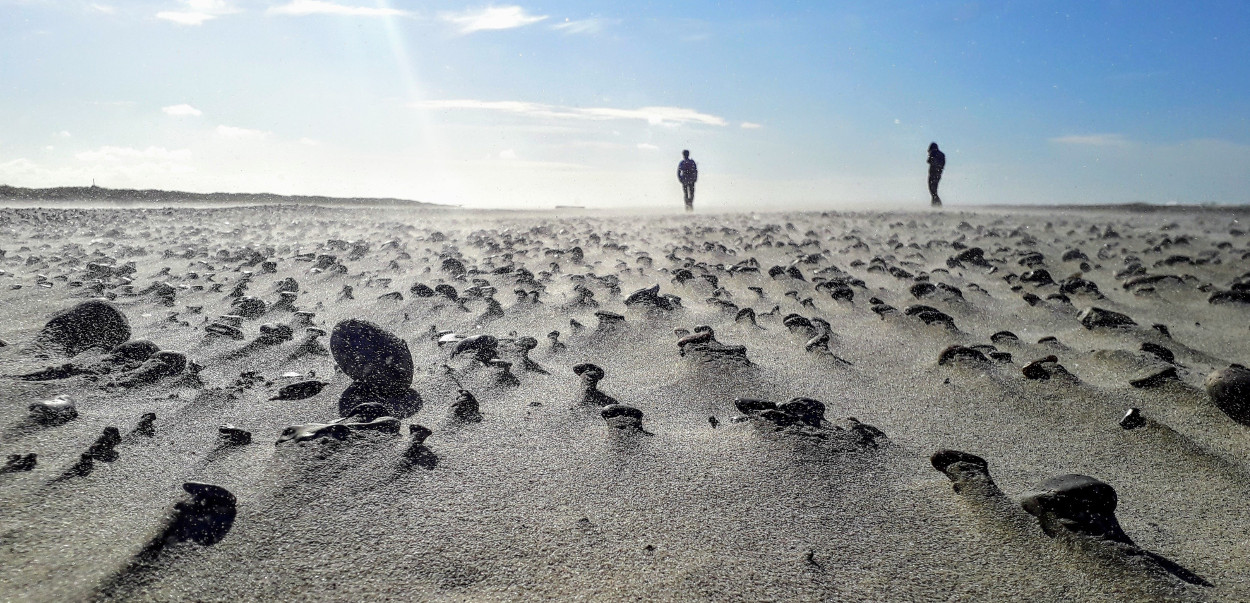
Back to our lighthouse we left for a swim in the North Sea, which was surprising warm, with huge waves that dropped us 200m further on the beach.
People: Simon S. Christiansen, Martin Yordanov Georgiev, Yehonatan Ben Aroia, Christian Stolz, Joost Van Duppen, Judith Kloibhofer, Rita Pate, Kurt Rasmussen, Lene Kappelborg, Silke and Chris.
Music - Mooncake Lagrange Points
Snake Fangs & Buzzard Gizzards
Entry written in Chrisperspective.
Yehonatan and I went out early to open the nets at Sardinkrattet for the ringing effort of today. Simon, Martin, Judith and Joost today had the lucky chance to sleep a little longer. By the time they arrived, I was already out at Verdens Ende and did morning observations. It was a beautiful morning with some little rain showers, beautiful rainbows (regnbue) but mostly dry observations.
Rainbow at world's end.
Birdwise, the number of wheatears (stenpikker) was staggering. At some points, almost every pole in the dunes had a wheatear sitting on top of it. I observed also active migration of birds coming over the sea towards land. At one point, while scanning the landscape with my binoculars, I saw a brown bird landing in a thicket a couple of hundred meters away. The time for that observation was maybe one second, but I recognised white spots on the wings and on the tail. "Nightjar" (natravn) was the first thought appearing in my head. I later searched the area to try to find the bird again, but to no avail. The observation time was unfortunately so short, that I cannot comfortably say that it was indeed a nightjar I saw - sometimes birding is just like that. Anders was also out, doing a bird-observation-walk from Grenen to Nordstrand. His highlight, besides the many wheatears, were 3 stonechats (sortstrubet bynkefugl).
Northern wheatear (stenpikker)
In the meanwhile the abundance of wheatears was also noticed at the ringing site at Sardinkrattet. Despite catching only two individuals in the late morning the site many of the birds were seen flying over. In terms of ringing the day was very productive with a total of 33 birds being ringed between 12 different species. And the rainbows were noticed as well, when Martin left the lighthouse.

Upon returning from ringing Martin and I focused on the dissections and preparation of another European viper (hugorm) and a common buzzard (musvåge) who were both victims of car accidents. We have made videos about both specimens as well as a video on how to tan and preserve a snake hide. Both animals were in a pretty bad state after their encounters with the vehicles. The viper had multiple ruptures of its skin and quite a few scales missing. Not to mention that a considerable part of its digestive system was outside of the body by the time we made the first cut.
The buzzard was in a very similar situation, its right eye was completely popped out from the orbit, both mandibles of the bill were detached from each other and the skull. Also the intestines were outside of the body as well. You can find out more about both in the commentary videos.
In the afternoon Judith, Joost, Martin and me took the usual daily swim.
Mexican fajitas were on the menu for dinner who left everyone quite full ????. The food was prepared mainly by me and Martin helped out a little bit :D
While we were busy dissecting and cooking Judith spent a considerable amount of time sorting our ever-growing picture archive, thank you Judith! Anders in meanwhile went out for yet another birding trip and found some common shelducks (gravand), which are always a nice sight! Joost used the time to do some sound stuff. :-)
Ringing (Sardinkrattet):
Dunnock - Jernspurv - 1
Robin - Rødhals - 4
Redstart - Rødstjert - 4
Whinchat - Bynkefugl - 1
Wheatear - Stenpikker - 2
Reed warbler - Rørsanger - 3
Lesser whitethroat - Gærdesanger - 2
Common whitethroat - Tornsanger - 3
Garden warbler - Havesanger - 1
Willow warbler - Løvsanger (Song of Songs) - 9
Spotted flycatcher - Grå Fluesnapper - 1
Pied flycatcher - Broget Fluesnapper - 2
Total: 33
People: Simon S. Christiansen, Martin Yordanov Georgiev, Yehonatan Ben Aroia, Christian Stolz, Joost Van Duppen, Judith Kloibhofer, Anders Odd Wulff Nielsen.
Writing music: "The Trapeze Swinger" - Iron and Wine and "Thong song" - Sisqo
BioBlitz and power outage
Today I was the only one going out for bird observations at the northernmost point of Denmark. The weather forecast yesterday evening was rather bad, but I woke up at 5 am and checked the weather radar to get updated information. To my surprise and pleasure the rain would stop in ca. 1 hour! I quickly made coffee and found some food in the kitchen to get ready. During the night there had been quite a storm, so I decided to do the observations from the outermost dune chain to be able to spot waders resting in the ponds created by the nightly rain on the beach. Good numbers of waders were then indeed foraging in the little ponds, with a bar-tailed godwit (lille kobbersneppe) being the rarest species that morning. Dunlins (almindelig ryle) and sanderlings (sandløber) were present as the most numerous species. In addition, up to 11 teals (krikkand) used the beach ponds as well.
1st calender year red knots (islandsk ryle) foraging on the beach
In the afternoon I joined Martin, Judith and Joost for a BioBlitz-event at the observatory. In those biodiversity events, participants try to find as many species within a given time period as possible. For one hour, two families and an observatory team were now trying to collect as many different animal species around the grey lighthouse. Among the animals (or animal parts) found were a fox skull, a mallard (gråand) pelvis, many insects like beetles, dragonflies, hoverflies, true flies, grasshoppers and crickets but also crustaceans, spiders and gastropods. The family teams crushed our observatory team which came on a disappointing last place. The BioBlitz was a really nice experience and seeing a younger generation discovering the biodiversity of life just in front of their house doors was just awesome.
Around 3:30 pm we suddenly experienced a power outage; a quick call gave the information that electricity should be restored by 5 pm. This however did not happen, and we had to wait until after 8 pm to get the power back. The energy company had to bring out a generator to the parking at the observatory to provide us with electricity again. Currently the source of the initial problem is unknown, but it might be related to the storm in the night.
Without any electricity, we couldn’t perform some of our usual activities like using the bird radar or punching data. Instead we went swimming in the sea – which was rather cold today. Our shower water unfortunately joined the fun, as warm water is generated by electric heating, so the shower after the swim was even colder than the bath in the sea.
Cooking is also difficult without electricity, so we had a nice bbq instead. “Good that the electricity went off, otherwise we wouldn’t have this awesome food”, Joost said looking at Martin, who would have been the kitchen chef and responsible for dinner tonight…

People: Simon S. Christiansen, Martin Yordanov Georgiev, Yehonatan Ben Aroia, Christian Stolz, Joost Van Duppen, Judith Kloibhofer
Writing music: Pink Floyd – Wish You Were Here
Danish trains
Just before sunset I started my morning with a walk along the coast to one of our observation posts where Christian and Judith counted birds. Along the way I saw some seal cubs waking up, ready to move into the sea before the tourists come.
We have received a very nice photo of the sighting of Thom Kongerslev who saw a red-footed falcon (Aftenfalk) on the Storsig site, not far from the station.
© Thom Kongerslev
After the observations, Judith and Yehonatan maintain the nets at our new ring location (Kabeltrommelkrattet), to mow the grass short enough so that birds do not get wet when they fly into the nets.
Martin gave a tour of the station, in which many participants took part
As usual, to freshen up, almost all of us had a good, joyful swim in the sea. Upon returning home, Yehonatan made a delicious juice from the sea buckthorn berries, which he picked.
Christina stayed with us for almost two months and we made a collective trip to Skagen to say goodbye. We wish her a safe journey and good luck for her next bird watching adventures. Later we received the message that she had arrived well and that she was impressed by the size and quality of the bathroom on the Danish trains.
Shortly after sunset I changed the audio recorders to check the data and discovered many batsounds in the spectrogram. Because the frequency of the bats is very high due to their echolocation, we cannot identify them with the current recording settings. 
People: Martin Yordanov Georgiev, Christina Ninou, Yehonatan Ben Aroia, Christian Stolz, Joost Van Duppen, Judith Kloibhofer
Red footed-falcons are coming!
So, like every morning we split to two groups, one goes to watch and count migration and the other goes to the ring birds. Both starts before the sunrise and takes a lot of experience, so it doesn’t matter you are going in the morning, you are going to learn a lot if its from the people that has more experience in ringing or watching. We, the volunteers try to teach each other as much as possible and share our knowledge about anything.
So I went with Christina, Christian and Simon to ring birds in the new site that we have been working on lately.
It was a nice morning with some nice birds.
At the end we had 24 birds.
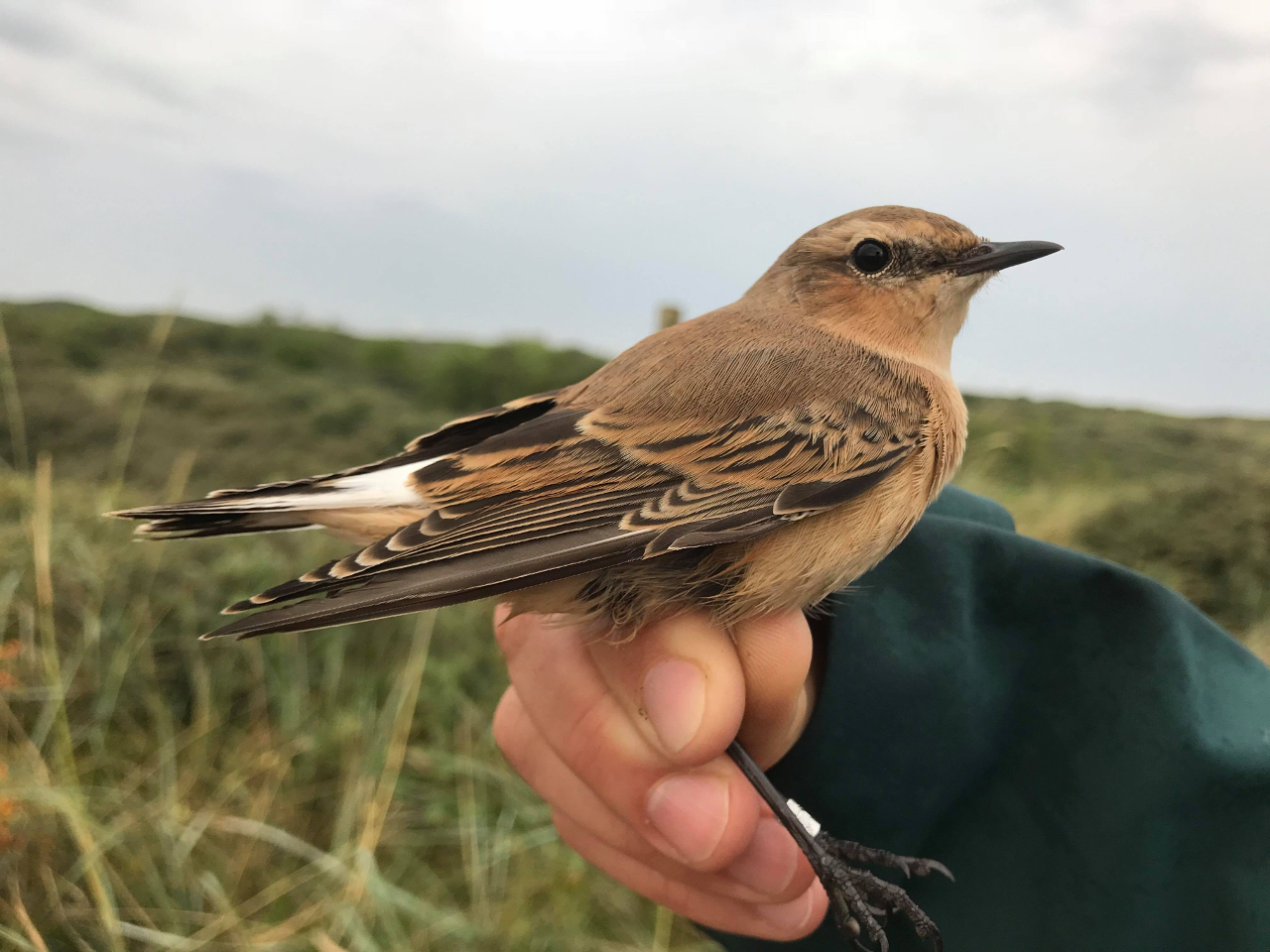
When Christina and Christian went to check the receiver on the late afternoon, they found a red-footed falcon (Aftenfalk) sitting on a tree along the way that flew off when they approached. They followed the bird to get some better pictures, but the falcon was quite elusive and was not seen again. The receiver was working as intended, so no further maintenance was needed.
Red-footed falcons are pretty are in Skagen and the in the last few days many people have been reporting about them and its not just here in Skagen! I many places in Northern Europe where the Red-footed falcons are pretty rare they have been seen a lot recently the last days as what we call "invasion". when a specie that isnt seen so oftenly is seen in many places and more often.
Ringmærkning (Kabeltrommelkrattet)
Musvit-Great tit - 1
Tornsanger-Whitethroat - 9
Munk-Blackcap - 1
Løvsanger-Willow warbler - 7
Grænsanger- Lesser whitethroat - 2
Gransanger-Chiffchaf - 1
Kærsanger-Marsh warbler – 1
Stenpikker-Northern wheatear - 1
Skovpiber-Tree pipit - 1
Total: 24
People: Martin Yordanov Georgiev, Christina Ninou, Yehonatan Ben Aroia, Christian Stolz, Joost Van Duppen, Judith Kloibhofer, Simon S. Christiansen
First ringing in Kabeltrommelkrattet
Kabeltrommelkrattet (cable drum thicket), turned out to be a very interesting site while even if we had to open and close the nets several times, we caught a big variety of birds. The activity is quite intense in this area with many migratory passerines flying around. During days with better conditions we might have some days with nets full of interesting species.
While Simon, Martin, Yehonathan and I were ringing, Joost and Christian went for observations, which unfortunately were interrupted by the rain and they had to come back to the lighthouse. That was rather fortunate however as they spotted a juvenile red-footed falcon (Aftenfalk), sitting on the railing of the lighthouse.
The nets at Kabeltrommelkrattet closed rather early due to the rain and wind, so we all ended up at the house working on different tasks. In the evening, a productive session on the moulting strategies of several different families of passerines took place at the station. We examined the four most common strategies birds follow during the year when replacing their feathers. With this knowledge we can differentiate between juvenile and adult individuals when we catch the birds in the field. By this, birds that are caught again several years later can be accurately aged. Furthermore, breeding success and juvenile survival rates can be estimated and compared.
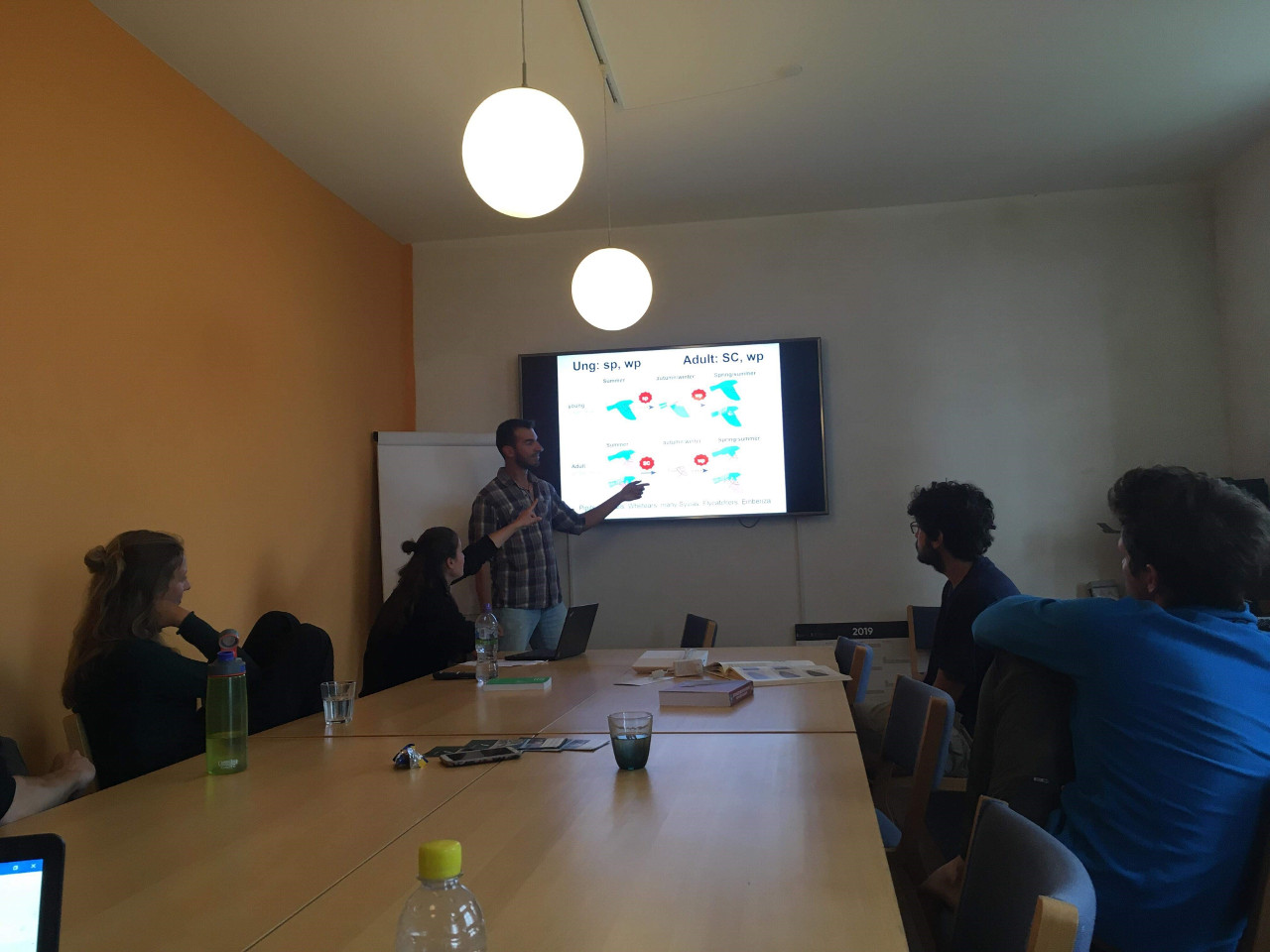
After dinner, we gathered in our cozy living room for beers and shuffle ball! We played for quite a long time and had tons of fun!
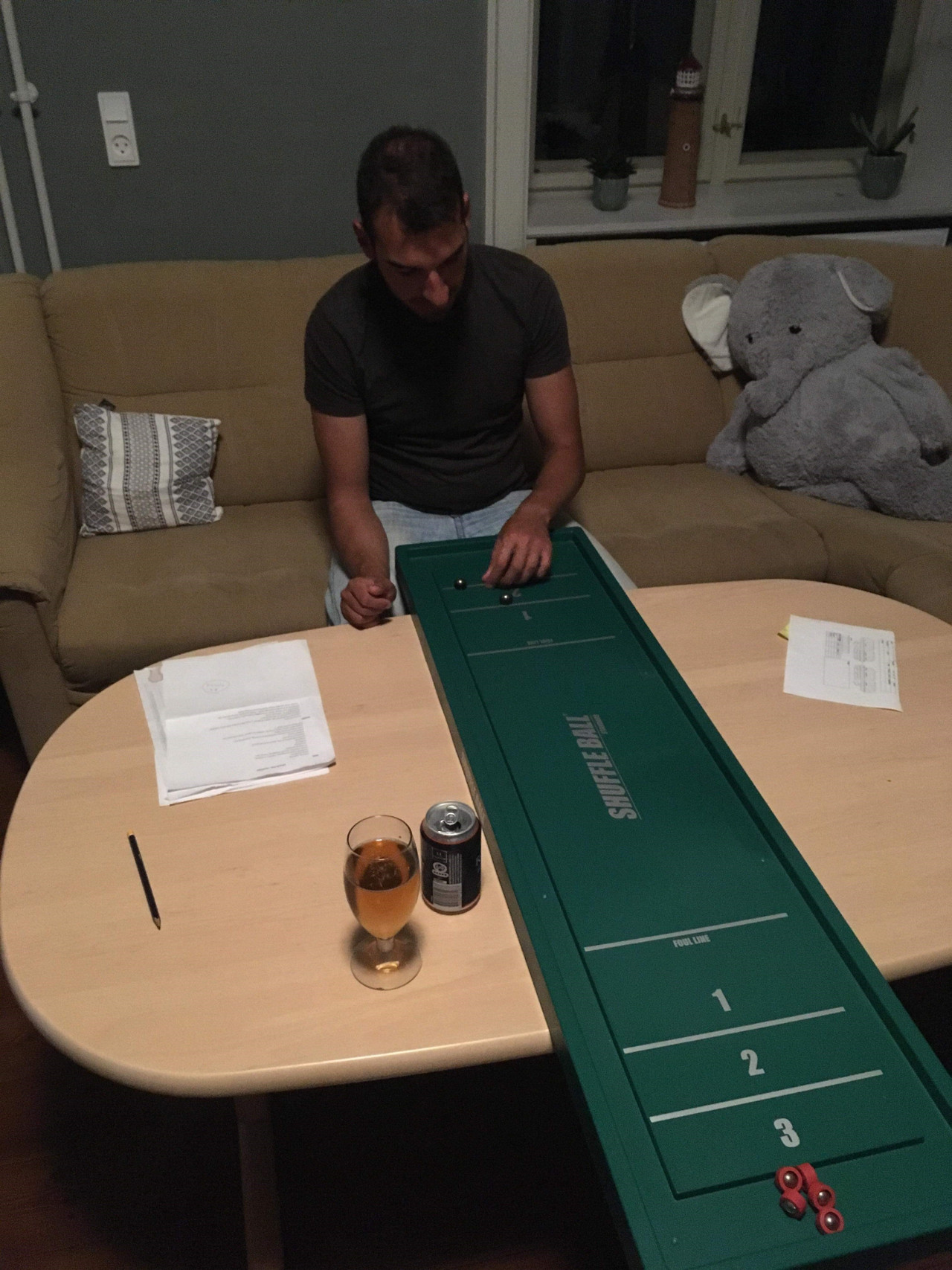
Ringing (Kabeltrommelkrattet, Grenen):
Common Redstart - Rødstjert - 1
Wheatear - Stenpikker - 1
Reed Warbler - Rørsanger - 1
Lesser Whitethroat - Gærdesanger - 1
Common Whitethroat - Tornsanger - 8
Garden Warbler - Havesanger - 2
Common Chiffchaff - Gransanger - 1
Willow Warbler - Løvsanger - 4
Spotted Flycatcher - Grå Fluesnapper - 1
Yellowhammer - Gulspurv - 1
Total: 21
People: Simon S. Christiansen, Martin Yordanov Georgiev, Christina Ninou, Yehonatan Ben Aroia, Christian Stolz, Joost Van Duppen, Judith Kloibhofer
New ringing site finished and trip to Stensnæs
The morning was dominated by ever-changing weather. Thunderstorms were roaming outside during the night and poor Joost woke up at 2am and couldn’t fall asleep anymore after. At 5am, Simon, Yehonatan, Joost and I were discussing the action plan for possible morning ringing. Thunderstorms/heavy rain was forecasted, but the weather radar looked ok. Therefore we decided to go outside – where it started raining. It was just a short shower though, and we continued to our ringing site and started to put up the first nets. Unfortunately it started to rain again and we hat to put the nets down again. We stayed during the rain shower in our little shelter tent at the ringing site. There was hardly any space for the three of us, but that space was enough for a million mosquitoes to join our downtime. Finally the raining ceased, Simon joined us and we were able to catch birds. See the list in the end of this post for more details on what ended up in our nets.
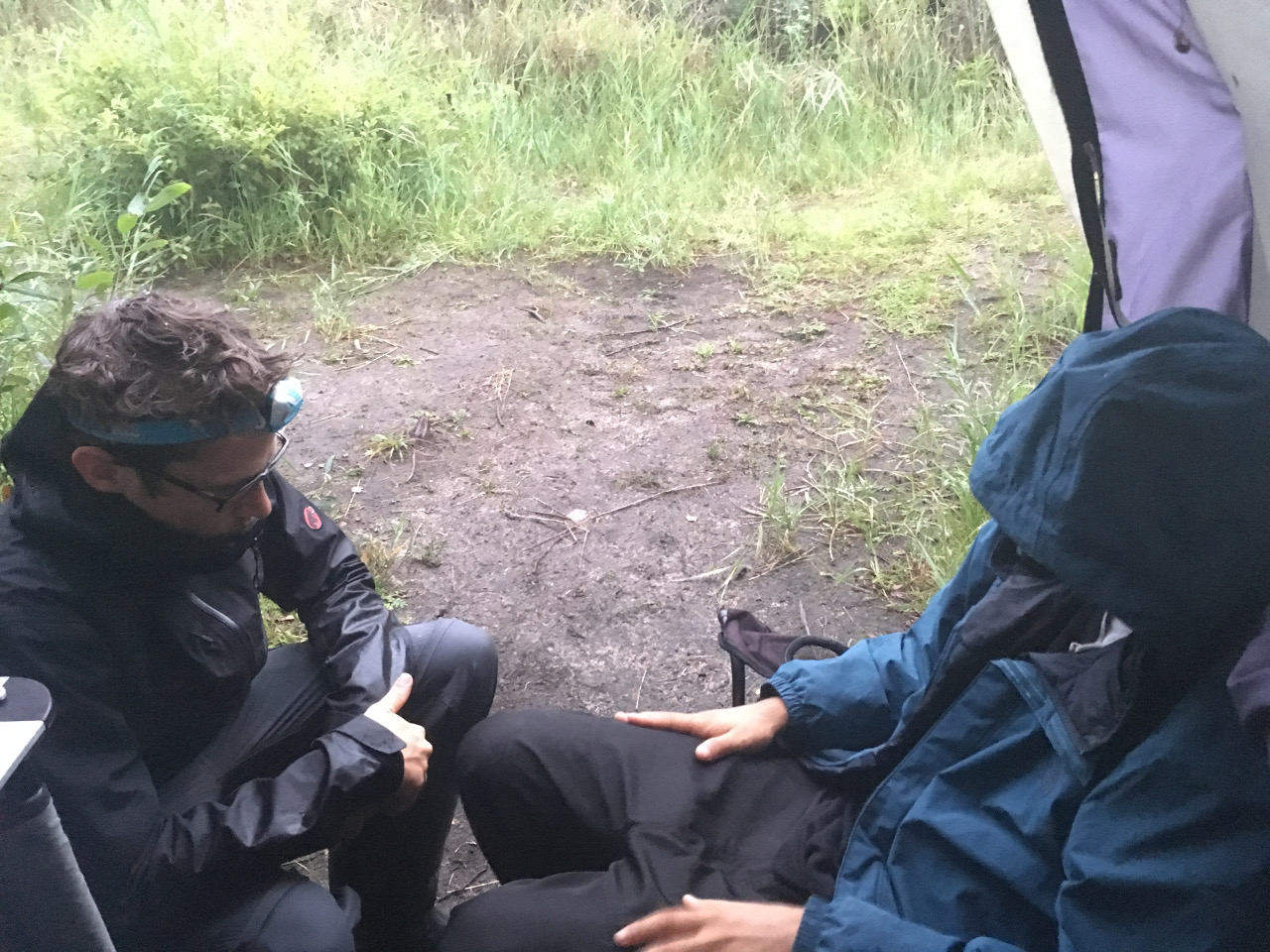
In the meanwhile, Christina was counting bird migration close by at World’s End. Migration was not very strong, so she had the time to find one of the surf scoters (brilleand), which is still in the area. At the same time, Martin went on a walk on the beach to collect interesting material for an upcoming tour. He found a dead seal pub and a dead harbour porpoise (marsvin).
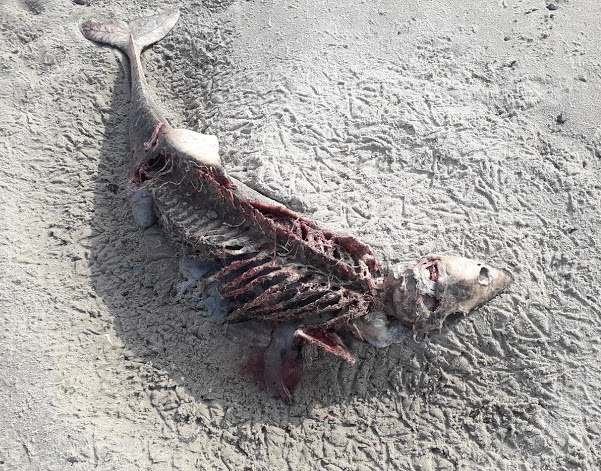
After ringing and observations, we put up the remaining nets at the new ringing site, Kabeltrommelkrattet (cable drum thicket) and cleared a path through the thicket to our new ringing table – the name giving cable drum. We are looking very much forward to go ringing there tomorrow.
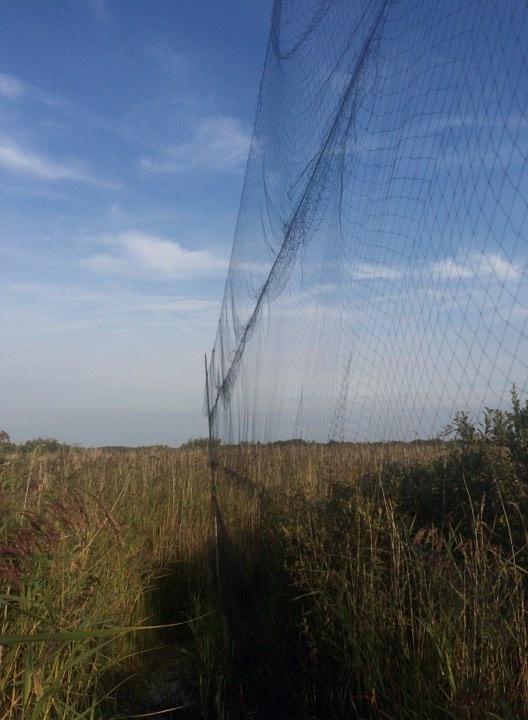
One of our brand new nets at Kabeltrommelkrattet
After coming home, our weekly Wednesday occupation commenced: Cleaning the house. With now so many people at the station as now, it was a fast and actual fun activity. Simon in the meanwhile collected yet another new volunteer from the train station: Judith arrived after a trip involving bus, ferry and train from Copenhagen.
In the evening, Simon took Yehonatan, Christina and me to the bird sanctuary Stensnæs – Lyngså south of Sæby. This area is known as a hotpot for waders (vadefugler) and we plan to use the shallow waters there for capture efforts. Today we went to check the movement of the birds and consider which places would most suitable for our nets. After Simon told us so many good stories about it, we were excited that he wasn’t exaggerating. We saw 17 different wader (vadefugl) species, among which red knots (islandsk ryle), oystercatchers (strandskade), dunlins (almindelig ryle), and curlews (storspove) were found in three-digit numbers.
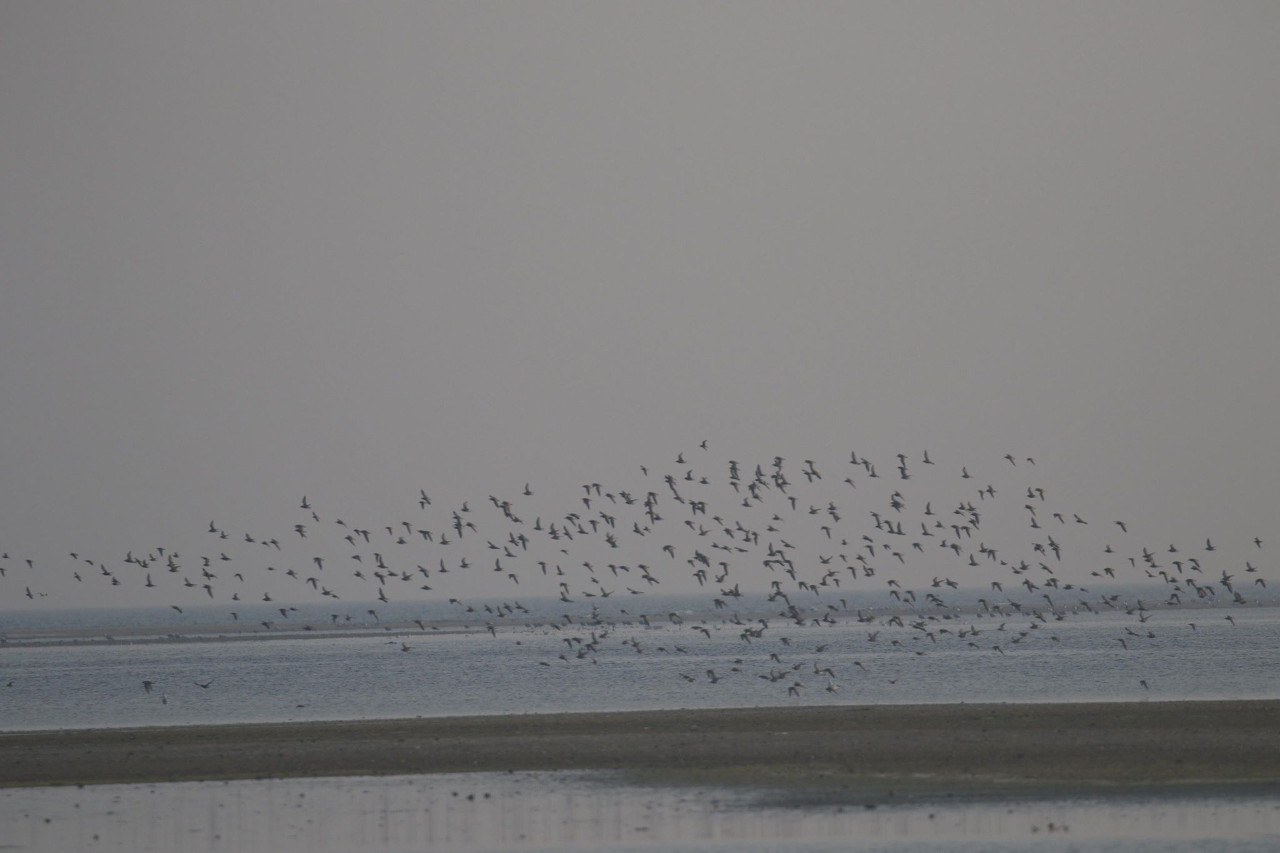
We arrived almost at high tide and observed how the water level decreased during our stay. The birds moved accordingly from their roosting places to their foraging sites. The best places to put up nets seem to be however unreachable without waders or a boat. If time and weather allow it, we will have our first trapping efforts next week.
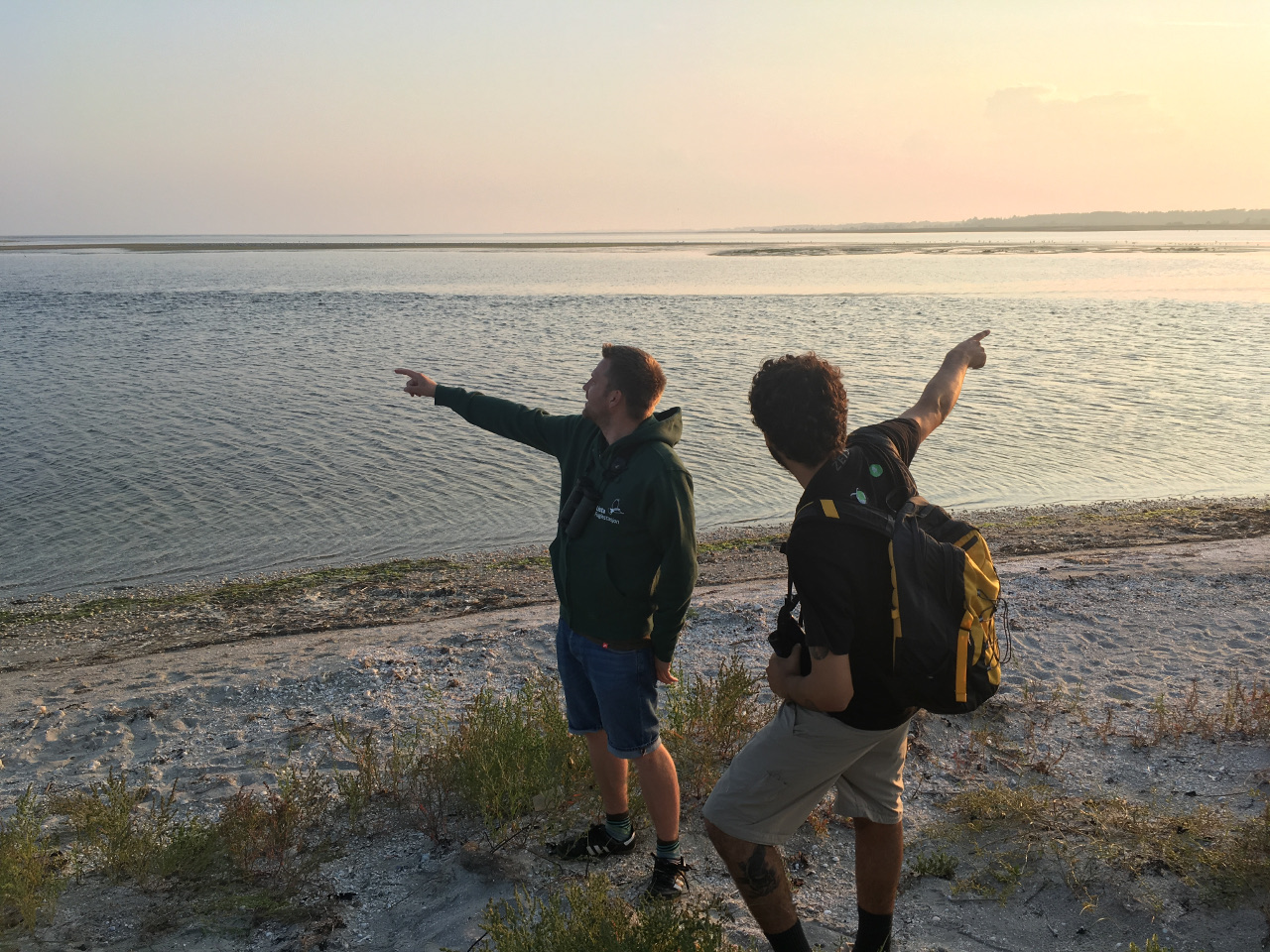
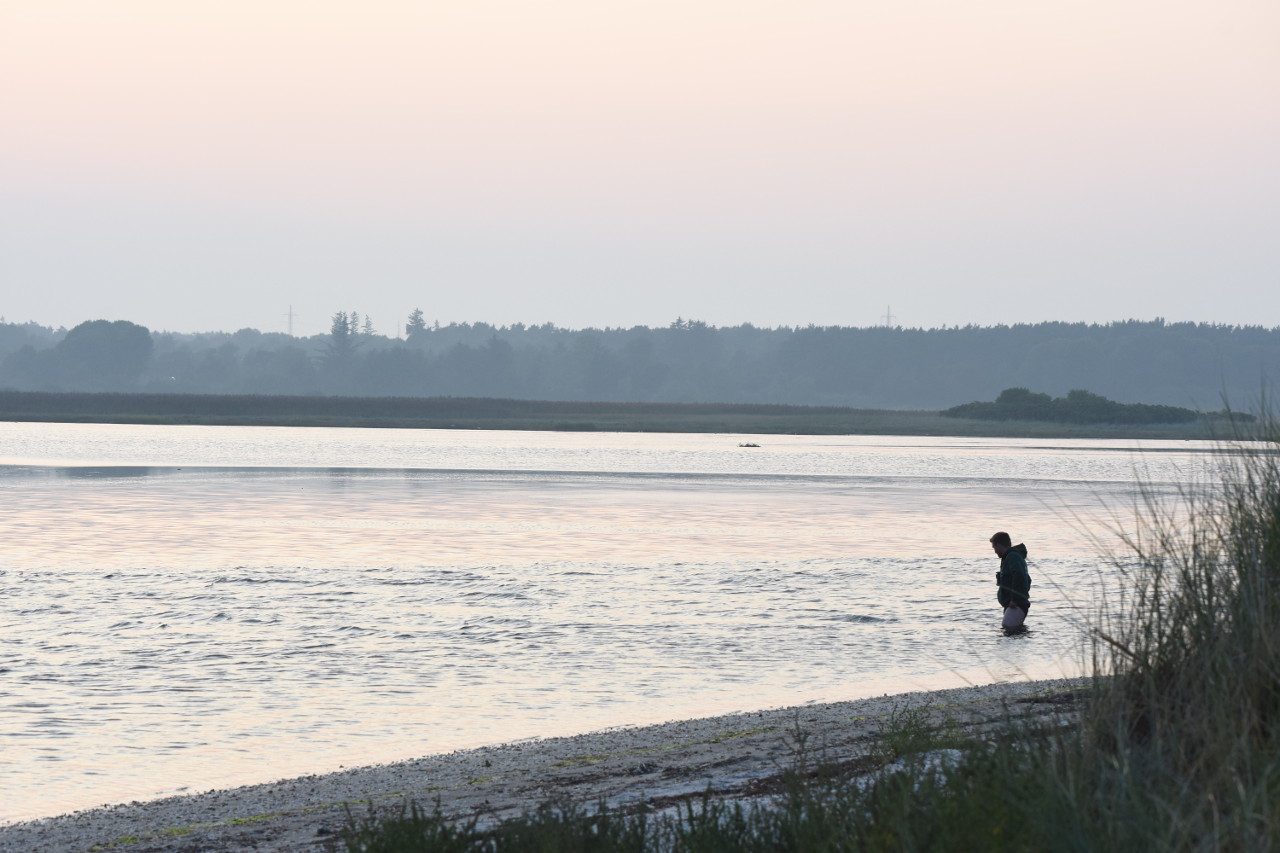
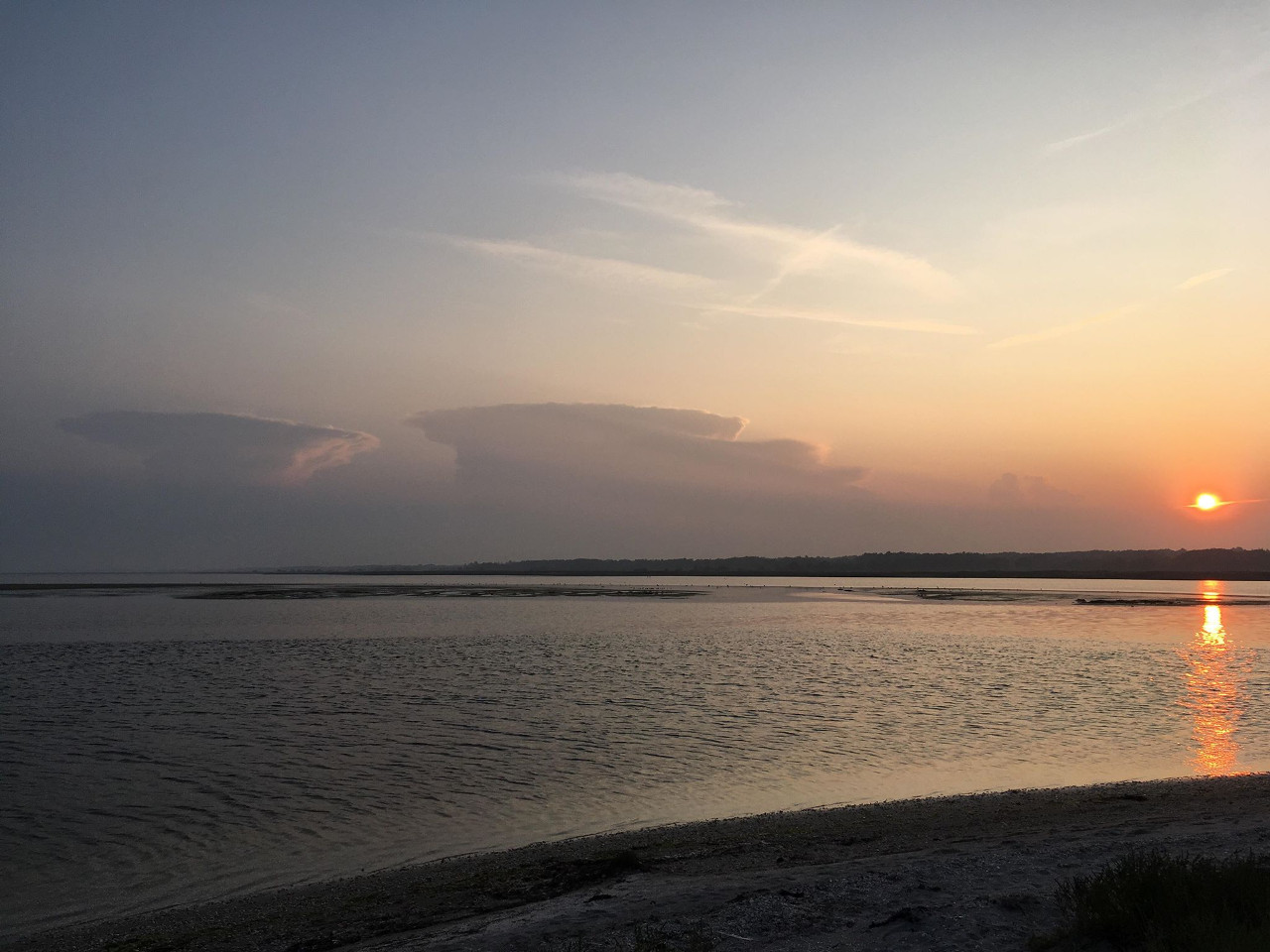 Thunderstorms approaching before sunset
Thunderstorms approaching before sunset
Ringing (Grenen – Sardinkrattet):
Spotted Flycatcher – Grå Fluesnapper – 2
Common Whitethroat – Tornsanger – 1
Eurasian Blackcap – Munk – 3
Eurosian Reed Warbler - Rørsanger - 3
Willow Warbler – Løvsanger – 10
European Robin – Rødhals – 2
Total: 21
People: Simon S. Christiansen, Martin Yordanov Georgiev, Christina Ninou, Yehonatan Ben Aroia, Christian Stolz, Joost Van Duppen, Judith Kloibhofer
Writing music: Major Parkinson – Black Box
In the footsteps of the red admiral
Since we now officially have a full house here at the station – six volunteers – we are now able to split up into teams and work on several tasks at the same time. Today Joost, Anders and Christian formed the observation team while Christina, Yehonathan, Simon formed the ringing team.
The weather was hot from dawn therefore we both expected a very slow morning. Our prediction was painfully on point. The observations team witnessed hardly any migrating birds and even the usual sea birds were not in the usual numbers. The ringing team in the meanwhile was as slow as well with a total of 22 birds ringed and two recaptures. The most eventful moment was a tree sparrow (Skovspurv) which was a nice distraction.
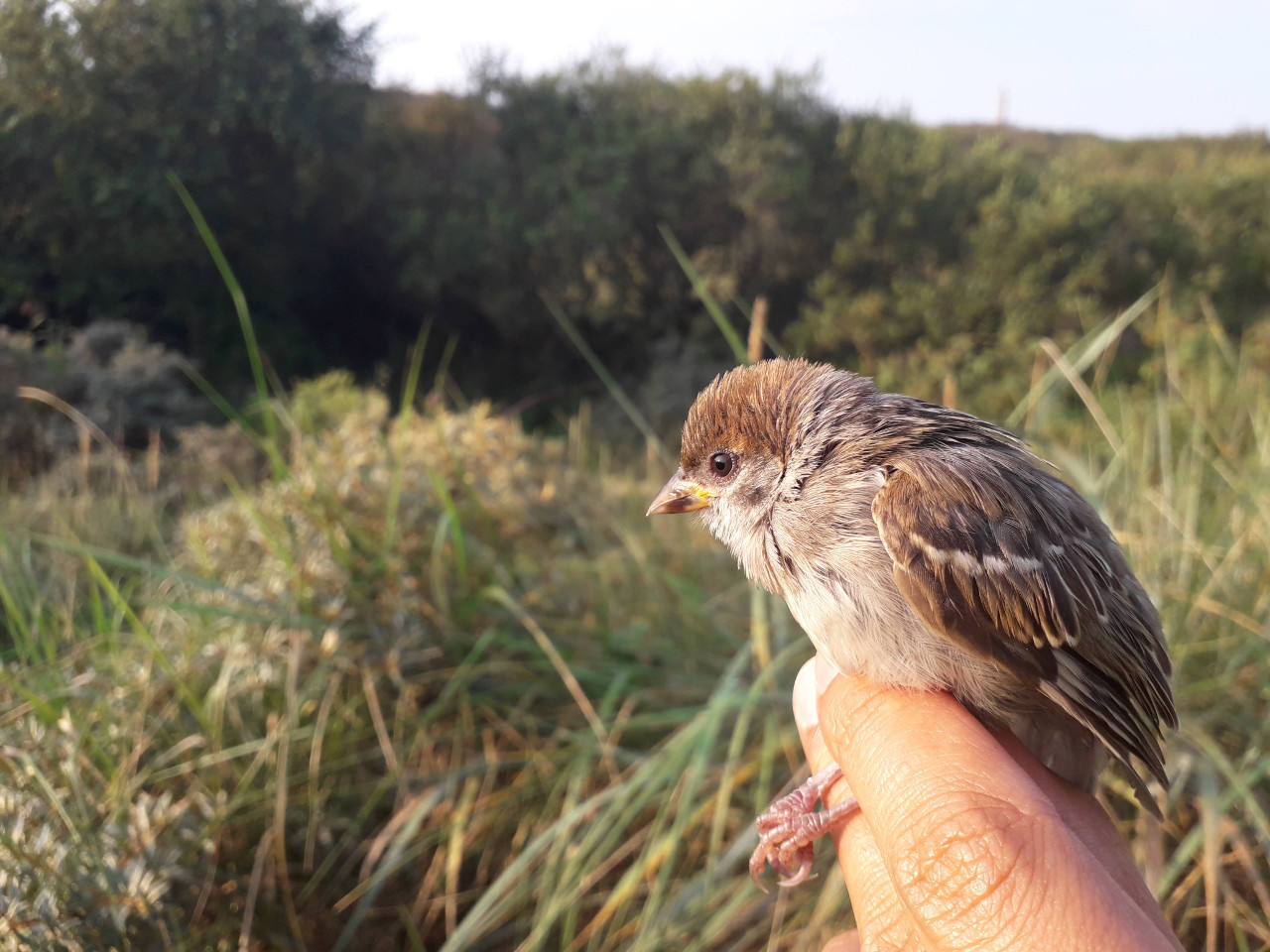
Upon return from fieldwork both teams had a quick lunch and split up into two new teams. This time Christian, Yehonathan and Christina set off to continue the work on the net lanes at our new site.
While the others were working Joost and I opened the nets in the garden. After this deed was done we used we started advertising the tour we put together in response to the large number of visitors in the lighthouse the past few days. On our first round we managed to catch a whitethroat (Tornsanger). As we were ringing a family from Slovenia walked in the lab asking for a tour. The timing couldn’t have been more perfect. They were three kids and their parents, and they were all so keen to learn about nature, it was a real pleasure for us as guides. During the tonur we unfortunately didn’t manage to catch any more birds but we were blessed with plentiful lovely insects (including the blood sucking ones unfortunately). On our way back to the station one of the young ladies caught a red admiral in most professional way. They all knew so much it was an amazing tour.
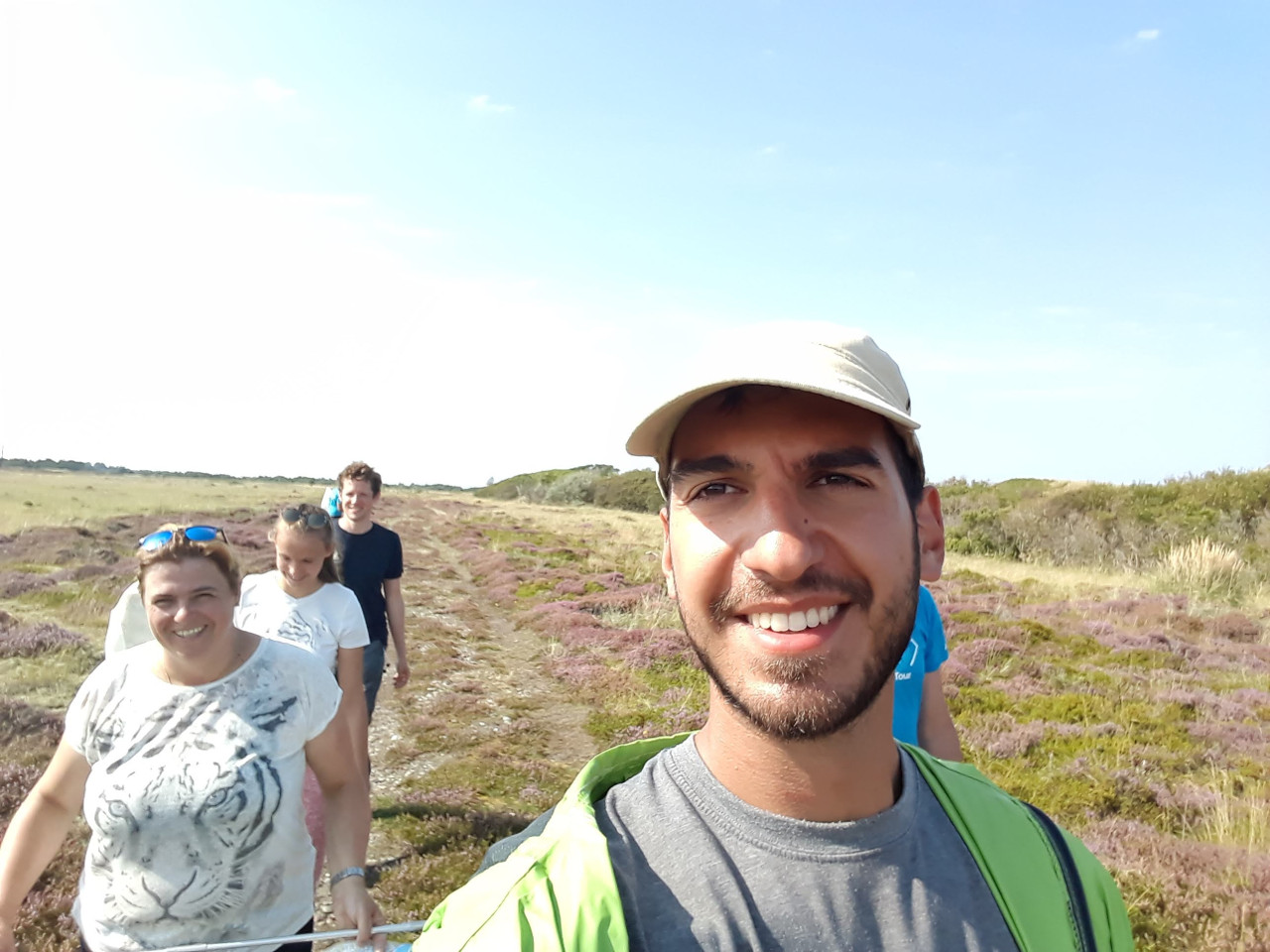
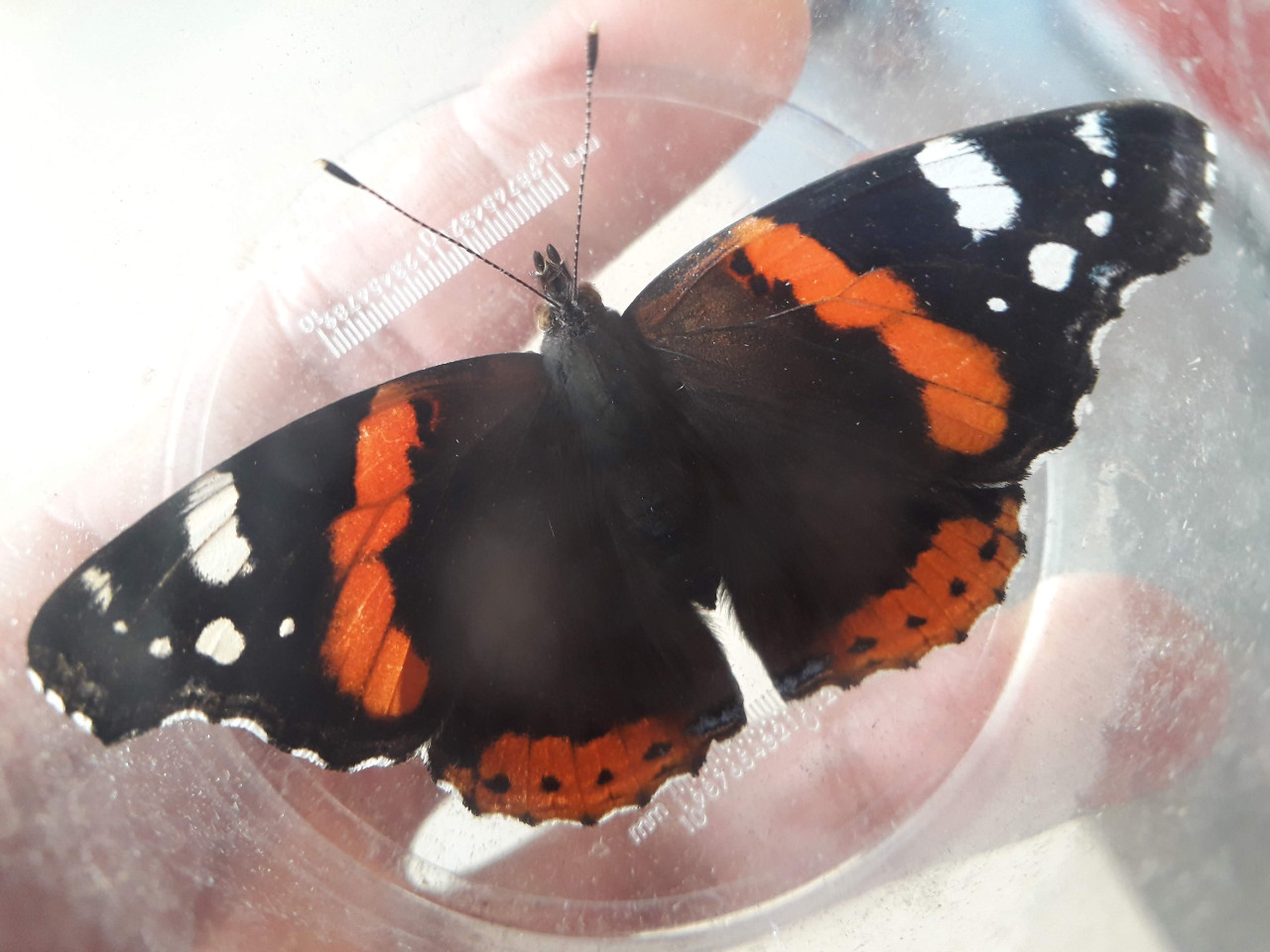
In the evening we celebrated the good weather with a lovely game of beach volleyball and a barbeque.
Ringing (Sardinkrattet)
Løvsanger 11
Gærdesmutte 2
Rørsanger 2
Gulbug 1
Tornsanger 1
Munk 4
Skovspurv 1
Ringing (Fyrhaven)
Tornsanger 1
Total: 23
People: Christina Ninou, Yehonatan Ben Aroia, Christian Stolz, Anders Odd Wulff Nielsen, Joost Van Duppen, Martin Yordanov Georgiev.
Nocturnal Skagen
Last night, after celebrating Christina's birthday, Christina and Martin decided to pack their sleeping bags and go stargazing. They made beautiful pictures of the moon.
Later in the morning they woke up in the wonderfull dunes with a wet sleeping bag because of the dew and could immediately start their observation while they lay.
This morning I’ve started my hike to look for my observator partners Christian & Anders, but I couldn’t find them and ended up on the beach. I’ve walked along the shore to Nordstrand and watched how waders run through the waving sea water.
Later we ‘ve checked the receiver, which is a project from the University of Copenhagen running at the Skagen Fuglestation, where birds are tracked by geolocation.
For dinner we went shopping and ate a tasty ice cream on a terrace in Skagen city.
Meanwhile the others were cooking, I’ve been out to install our first overnight recording, a new sound project that tracks nightcalls from migratory birds.
People: Simon S. Christiansen, Martin Yordanov Georgiev, Christina Ninou, Yehonatan Ben Aroia, Christian Stolz, Joost Van Duppen, Anders Odd Wulff Nielsen
Hot and slow days
So we are having some very sunny couple of days Skagen and the next few will also be like that.Which is very good for outdoor activities like stuff that we did, cutting lanes for new nets, counting sea birds, swimming and many more…But these days are also very slow for Birds migration.Today I went to the CES site that we usually ring to help Michael which is also ringing there.The early morning was very foggy and wet, and after that it quickly became very sunny and hot and very slow for birds. We actually didn’t catch not even a single bird! but a nice Great cormorant (Skarv) that used the place that we ring to rest and dry his wings, made us nice company for the morning.

After the no-birds ringing I joined Christian, Christina and Joost and they told me they a very slow morning without a lot of bird activity on the beach. But still we had a great time enjoying the local sea birds and having a good time.After our nice morning we went back to the station and a little birthday party for our volunteer Christina! Which turned 27 today! we had a great cake and had a great time all of the volunteers together. Good times!

Razorbill (Alk)
In the evening, after a long day, me and Martin drove to pick up Simon from Hirtshals, after he had a great time in Lista bird observatory in Norway, and on the way I had a couple of minutes for some nice birdwatching and saw some Oystercatchers (Strandskade) and Bar-tailed godwit (Lille Kobbersneppe) at last sunlight.Both if the birds are not so common in Israel and its very nice for me to see then here!

